Monitoring on territories beyond the control of Ukrainian authorities
During the monitoring mission, the participants (members of the “Memorial” Human rights centre) visited the territories which are beyond the control of Ukrainian authorities two times: 16-24 of May 2016 and 3-9 of June 2016.
We were collecting information on the consequences of hostilities, on restoration of destroyed objects and on the current condition of civil population on the territories beyond the control of Ukrainian authorities.
Participants of the mission worked in the districts of Donetsk, which had suffered bombing in 2014-2016 (Kuibyshevskiy, Petrovskiy, Kyivskiy, Kirovskiy districts, including villages Trudovskie, 1-ya ploshchadka, Oktiabrskiy), in towns Dokuchaevsk, Horlovka, Makeevka, Snezhnoe, Uhlehorsk, Debaltsevo and Inakievo, in villages Novosvetlovka and Khrashchevatoe, village Nikishyno.
Previously, in 2014, representatives from the Human rights centre “Memorial” visited some of these population centers and characterized the situation there.
Work complications for the monitoring mission on territories beyond the control of Ukrainian authorities
The authorities of the self-proclaimed LNR refused to provide accreditation to the representatives of the Human rights centre “Memorial”. For this reason, the monitoring process took place mostly on the territory of the self-proclaimed DNR. Moreover, during the second mission to the territory of DNR, it wasn't possible to get accreditation to work on the territory of DNR, as the rules of accreditation had been suddenly changed. These changes caused significant complications. Nevertheless, we managed to visit two population centers near Luhansk, which had been previously seriously damaged during hostilities.
Even though we received accreditation, it wasn't always possible to get information from DNR officials. Our attempt to meet any representatives of the General Prosecutor's office of DNR and to get some answers failed. Upon request for this meeting the press-secretary asked us to send the list of our questions prior to the meeting. After we had done as asked, they refused to meet us with a strange reason: “The General Prosecutor's office of DNR is not a public agency”.
We also failed to get information in the Ministry of Education and science. After thoroughly checking and copying all our documents (including the accreditation from the DNR press-centre) the head of department on information policy of this Ministry, Aram Azizovych Beglarian noted down our questions (quite ordinary questions – general number of schools, how many of them suffered during the conflict, availability of learning materials, staffing level of teachers, education languages before the conflict and now etc.) and promised to answer them the next day and let us talk to school employees – from what he said, talking to them would be impossible without his approval. We never got neither any answers nor approval to talk with the staff. However, this didn't stop us from visiting a number of schools and talking with their principals and teachers. When we came to the Ministry for the fourth time, A.A. Beglarian refused to give us any information reasoning his actions as an order from the minister – L.P. Poliakova.
During the second monitoring trip, the press-centre of the Government and National Council told us that because the rules had changed, only mass media representatives can get accreditation from now on. It turned out that human rights organizations accreditation issues are not governed by anyone. In the end we were advised to apply to the Interagency committee on accreditation of humanitarian missions. Upon request to the committee we were told that the accreditation process takes two weeks, that the Human rights centre “Memorial”, being a human rights organization, does not comply to the mandate of this centre. Nevertheless, as an exception, we were promised that they will look through our matter on accreditation in the nearest. Prior to that they said they would send us the list of documents needed to apply to their centre (a copy of the organization Statute, etc.). The wall of the office we had this conversation in had pictures of J. Stalin and R. Kadyrov on it. After all no list of documents was sent to us, so we had to work with no accreditation, which added complexity to the mission: no possibility to meet officials, higher risk of complexities while working in regions close to the borderline.
The Authorized official on human rights in DNR D.V. Morozova, despite our numerous appeals to her apparatus, eluded meeting with us. Her press-secretary didn't give us any answer to the email we sent. As a result we use the information (including information on forced in-migrants) published on the website of the Authorized official.
We thank the centre on DNR reconstruction management and the press-center of the Ministry of construction of DNR for prompt information reports on conduction of reconstruction works.
General situation
Even though many civilians, who left because of hostilities, returned to their homes, life is not back in its ordinary route. The number of people and vehicles on the streets of Donetsk is much smaller than before the war. The districts close to the borderline between the sides of the conflict mostly have uninhabited buildings.
The economical crisis can be seen with a naked eye.
A major part (around one third) of shops and offices are closed, and many of those that work are open during limited hours. The centre of Donetsk is an exception. No commercial adverts can be seen, often political agitation posters are seen instead (very often – pronouncements by the head of DNR A. Zakharchenko).
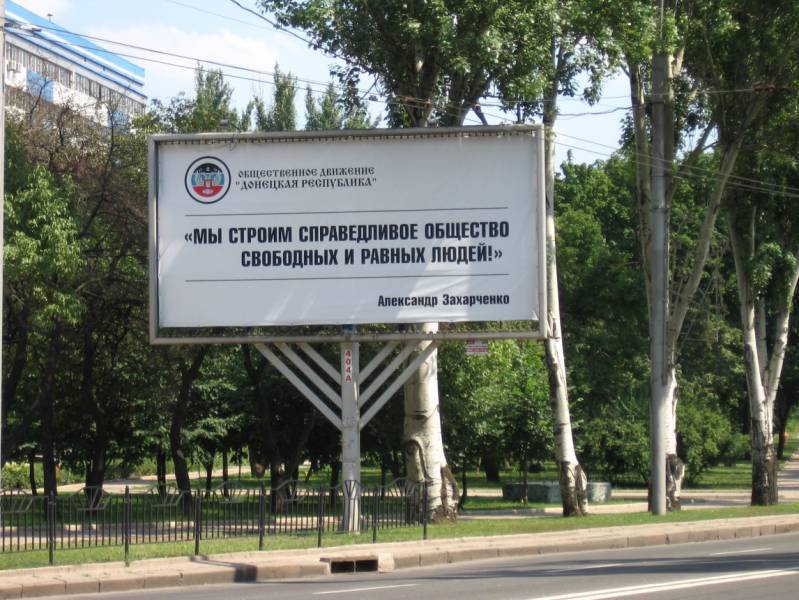

At the moment, the only currency in DNR is the Russian ruble.
Since spring-summer 2015 state employees and retirees started getting regular payments with no delays in Russian rubles. Payments are made based on the amount of money people were getting back in Ukraine by the rate of two RUR to one UAH (the actual rate is 2.6:1). Before this, on the territories beyond the control of Ukrainian authorities, state employees were getting no payments and pensions were difficult to get.
According to the data of the Retirement fund of DNR, the average pension is 4015 RUR. This is the equivalent of 1526 UAH, according to the exchange rate in “DNR” currency offices, where 1 RUR costs 0.38 UAH. Provided that, the average pension on the territories of Donetsk region controlled by Ukraine is 1960 UAH. The minimal pension in DNR is 755 UAH and on territories controlled by Ukraine, before May 2016 – 1074 UAH. (since May, the minimal pension was increased to 1130 UAH, in December it will be increased to 1247 UAH. http://profiwins.com.ua/directories1/minpens.html).
It's obvious that state employees and retirees could not have been payed without significant money infusions from the Russian budget.
Minimal salary is 2514 RUR (1257 UAH).
The level of unemployment is very high. Many industrial companies, including factories and mines don't work. Open vacancies offer vey low salaries – from 2000 to 6000 RUR. Together with that females usually have less trouble finding work (mainly in trading) than males.
According to official data from the Ministry of economical development:
General present population in 2015 on the territory of DNR was 2277.2 thousand people, 68% of these people inhabit three biggest cities of DNR – Donetsk (962.0 thousand people), Makeevka (382.8 thousand people) and Horlovka (210.0 people). Similar is the average staffing number of regular employees, which states that in general there are 346.4 thousand people or 15% from all inhabitants employed in DNR, including the situation in the biggest cities accordingly – 146.1 thousand people, 55.3 thousand people, 30.3 thousand people.
The average salary of a regular employee in 2015 around cities and regions of DNR floats between 4685 RUR in Horlovka and 10850 RUR in Zhdanovka. The estimate in Donetsk is 6782 RUR. The difference in pensions is slightly smaller. In 2015 the pensions floated between 2619 RUR in Telmanovskiy region and 4368 RUR in Zhdanovka.
These salaries make it quite difficult to get by. The thing is that the food prices are significantly higher than in Ukraine (see annex 1), regarding many products in comparison with Moscow prices.
Vulnerable population categories (most retirees, lone mothers, disabled people, etc.) survive with the help of humanitarian food supplies – primarily with the help of Rinat Akhmetov's aid fund, secondarily – with the help of Russian aid.
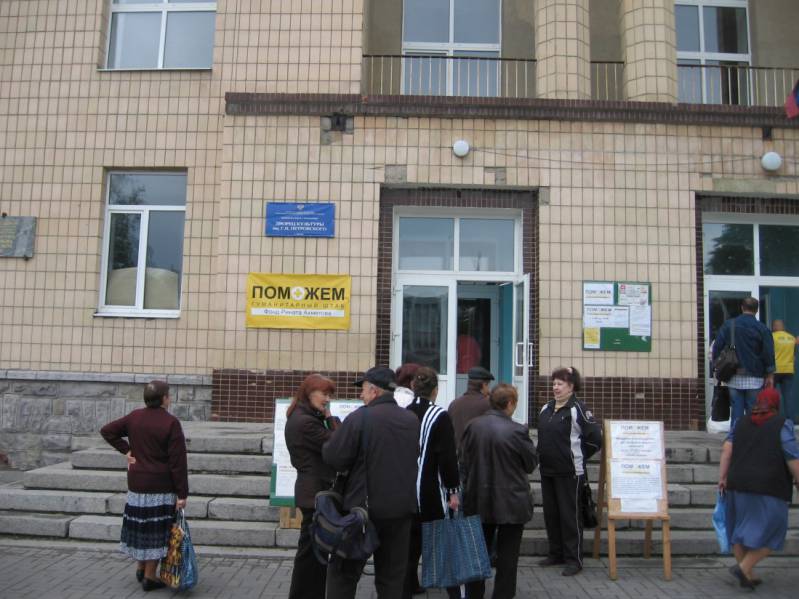

Handing out humanitarian aid by Rinat Akhmetov's aid fund in Petrovskiy district of Donetsk.
High prices on the territories of self-proclaimed DNR and LNR are affected by restrictions from the Ukrainian side on the one hand, but on the other hand the influence of the Russian provision embargo on European food supplies is as strong. Delivering products from Poland to DNR-LNR is possible only through Russia, but trucks with European foods are prohibited from entering Russia.
Starting January 2015, Ukrainian authorities started implementing restrictions for articles of merchandise (including food supplies) on territories, beyond the control of Ukrainian authorities. Consider difference in prices, inhabitants of self-proclaimed DNR and LNR aim at delivering food supplies from the territories controlled by Ukrainian authorities. Currently one individual may carry no more than 50kg of products worth no more than 5000 UAH. These restrictions do not include supplies delivered as humanitarian aid.
Nevertheless, the flow of supplies from the territory of Ukraine to the territories controlled by separatists didn't stop, it simply adopted a criminal model. For example, from the words of an individual connected to organizing such shipments, it costs 70000 RUR (in UAH) to bribe Ukrainian customs officers and get a truck over the borderline from Ukraine.
Speaking of price correlation it is important to remember that utility tariffs set by the Housing and Utility department on the territories of self-proclaimed DNR and LNR stayed the same as before the war. In addition to this they have been transferred to RUR by the rate of 1:2, the same as salaries and pensions. Even though such exchange rate is a disadvantage in terms of salaries and pensions, it allows recoups itself in terms of tariffs. Public transport prices are low (City transport in Donetsk – 3 RUR, city minibus – 7.5 RUR), petrol is considerably cheaper than on the territories controlled by Ukrainian authorities.
Among significant factors influencing public sentiments are:
– Propaganda: DNR mass media present no alternative points of view, use extremely aggressive terminology. Alternative adequate informational services broadcasting in Russian don't exist.
– War consequences: Bombings and devastation resulting from them, death of family members and friends hardened the people and reinforced the image of the enemy, maintained by propaganda. Violence, displayed towards many captives and those taken into custody for supporting self-proclaimed republics only further promoted this image.
– Pension problems: enactment of the Cabinet of Ministers of Ukraine seized bank activities, pension payments and social payments on territories controlled by separatists. It should be said, that Ukrainian authorities stated that they do not mulct the retirees their pensions. The money transfers are still getting allocated to their accounts. However, converting those payments into cash requires traveling to the territories controlled by Ukraine, registering and documentary proving moving to a new address of inhabitance. Only then can they get the money. Naturally most elderly people in DNR and LNR do not have the abilities to meet such terms. Not many people would easily set off who knows where and search for a place in refugee camps or spend all the pension for renting a place to live. Most of those who left were people who had relatives prepared to host them. However, other “under-the-counter” schemes began working full power. Many population centers of Donbas, controlled by Ukrainian authorities, have middlemen ready to forge a registration and documents for a certain price. These documents are to prove that the retiree supposedly moved from the “separatist” territories to the territory of Ukraine. Members of the monitoring mission heard many stories of this during their trip.
Here's an example. Citizen N.F., who had worked as a combined machine operator in a mine for 30 years gets the salary of 6400 RUR in DNR (instead of 3200 UAH). At the same time he registered officially to be getting his pension in Ukraine. To do so he had to forge a place of residents with his relatives in Volnovakha. After that he spent 3 days to formalize all the needed documents at the migration service, retirement fund, etc., and stand in long queues. He had to pay bribes. As a result he was payed pension for the previous 9 months he hadn't been getting it. However, starting 1 of August 2016, pensions to inhabitants of territories beyond the control of Ukrainian authorities are only being payed out by “Oshchadbank” on the territory of Ukraine after official registration. These cards will also serve as pension authenticators. Once every half a year identification procedure is required because otherwise the credit card will be blocked, however the procedure of blocking the card is unclear.
The activities which developed from these restrictions gained the name “pension tourism” – when retirees or their relatives travel over the borderline to the other side to get their money, pay a part of it to mediators and return. Nevertheless most retirees on the territories controlled by separatists don't have even this option to get their pensions. We consider that the responsible government in this most difficult situation currently in place in Donetsk and Luhansk regions, should primarily focus on fulfilling their duties to the most vulnerable parts of their population, in particular retirees. Authorities of Ukraine were responsible for providing the possibility to get pension payments by those who are supposed to be getting those payments, on the territories controlled by them (as legal authorities), without any additional terms. This would soften the acuity of the question, at least for those who retirees who have the pension cards.
In the recent months the situation deteriorated because representatives of Ukrainian authorities conduct absolute and thorough inspection of factual place of inhabitance of individuals receiving pensions. All this naturally causes irritation and resentment of the population on territories beyond the control of Ukrainian authorities. The further down the harder it will be to overcome/put out these emotions.
– transport problems: many people need to cross the borderline quite often for family or work matters. A huge number of relatives found themselves on different sides of this borderline. In addition, such movement is possible through a very restricted number of access points. The existing order of crossing through these access points by foot or in vehicles is determined by the Ukrainian side, apart from that, the existing equipment and the qualification of staff at these access points cause massive queues (sometimes it takes over 24 hours to get through) with almost no living conditions. This situation inevitably causes complaints towards Ukrainian authorities with no regard to political views of the individual complaining, it also provokes corruption among Ukrainian enforcement officers.
– Economic situation: as previously stated, correlation between salaries and supplies prices, especially after exchanging state employee salaries and pensions from UAH to RUR by a low exchange rate cause numerous complaints of population towards the government of the self-proclaimed republic authorities.
General impression is that in summer 2016 significant part of the population felt disappointed for unfulfilled expectations of spring 2014. “At this point we are against everybody, against both the Ukrainian authorities and our DNR authorities” – these were the words of some interviewees to the members of the monitoring mission.
Scales of devastation and the progress of reconstruction
The scale of devastation which the hostilities resulted in on the territories of Donetsk and Luhansk regions of Ukraine are enormous on both sides of the borderline between the sides of conflict. Reconstruction works are taking place on both sides of the borderline, but the comparison is obviously not in Ukraine's favor.
During our monitoring trips we saw that massive reconstruction plans have been launched on the territories of self-proclaimed DNR and LNR. These plans include both multi-compartment buildings and private houses. With no doubt, this has become possible only because the biggest part of these reconstruction works are performed with the help of Russia.
According to the information provided to members of the monitoring mission by the press-center of Ministry of Construction of DNR, the interlocutory figures state that during hostilities on the territories controlled by the authorities of self-proclaimed DNR the objects listed below have been destroyed or damaged:
– 1676 social objects, 621 restored,
– 4233 multi-compartment buildings, 60 beyond economic repair, 825 restored.
– 17 803 private houses, 1793 beyond economic repair, 2596 restored.
The process of reconstruction was divided into phases. Currently the second phase is coming to an end.
The first phase took place between March and May 2015. That phase was focused on restoring socially important objects – schools, hospitals, boiler houses, water supply facilities – 293 objects (including 116 – education facilities, 25 – healthcare facilities, 123 – heating supply facilities, 27 – water supply and water discharge facilities, 1 cultural facility, 1 energy facility).
The second phase of reconstruction started in September 2015 in is still active. This phase focuses on reconstruction of social facilities and living premises. According to tplan, the second phase includes:
– reconstruction of 436 social area facilities (246 education are facilities, 105 – healthcare facilities, 62 – heating supply facilities, 23 – water supply and water discharge facilities),
– reconstruction of 1189 multi-compartment buildings,
– reconstruction of 2000 private houses – the so-called “2000 houses” plan. This plan includes providing owners with building materials for conducting repairs, which they have to pay for themselves,
– Construction of 111 new private houses instead of those totally destroyed in population centers Debaltsevo, Uhlehorsk, Ilovaisk, Zugres and Shakhtersk. This program includes four new types of houses (32, 42, 54 and 84 sqr.m) depending on the number of people previously registered in destroyed houses,
– Construction of three multi-compartment buildings instead of those beyond economic repair.
In the beginning of July 2016, during the second phase of the reconstruction program 334 social are objects and 564 multi-compartment buildings had been completed.
During the implementation of the “2000 houses” program, according to preliminary estimates, more houses will be restored than initially planned – the assumed number is 3728 houses.
111 new private houses had been completed (instead of totally destroyed) in the towns of Debaltsevo, Uhlehorsk, Ilovaisk, Zugres and Shahtersk. In addition, material means saved during these construction works have been used to start building another 18 private houses in the Proletarskiy district of Donetsk.
Currently there is a list of objects yet to approved for reconstruction in the third phase (bothe social area objects and and living premises).
The Centre of reconstruction management of DNR (department controlling the reconstruction process) gave us quite different figures:
The overall number of social and life support area objects destroyed or damaged on the territories controlled by self-proclaimed DNR is 2574. 4 of them are beyond economic repair, thus new buildings need to be built instead of them. 366 objects had already been restored.
Concerning housing areas, 10 000 residential units in 20 population centers had been currently detected to have been damaged (meaning major population centers like the town Debaltsevo, with 6 villages connected to it). This figure includes both single-storey private houses and multi-compartment buildings.
It looks like the difference in figures given concerning restored objects, presented by the Ministry and the CRM (Centre of reconstruction management) took place because the CRM, regarding its statistics report, only included those objects which had all the documentation prepared on building and repairing activities, and where the specialists of this agency completed their work on the conducted procedures. Thus there is a time difference between completing repairs and documenting them officially by the CRM, so these objects hadn't been including into the statistics report if the CRM, but had been taken into account by the Ministry as repaired during the second phase of the reconstruction program.
Similar programs are present in self-proclaimed LNR. For example, as part of the “100 houses” program, they're conducting construction of new private houses instead of those totally destroyed in population centers Novosvetlovka, Khriashchevatoe, Chernukhino, Heorhievka, there is also a reconstruction program called “2000 houses”, etc. Having failed to get accreditation we could only visit two population centers on the territory of self-proclaimed LNR, severely damaged during the hostilities – Novosvetlovka and Khriashchevatoe. Previously, in November 2014, representatives of the Human rights centre “Memorial” visited these population centers and reported of the damage they suffered. This time we registered noticeable improvement in reconstruction of destroyed social and living area objects in these population centers.
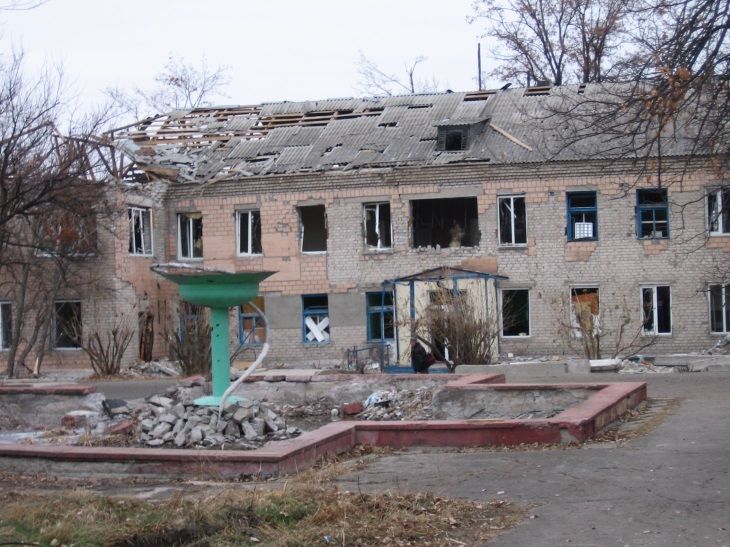
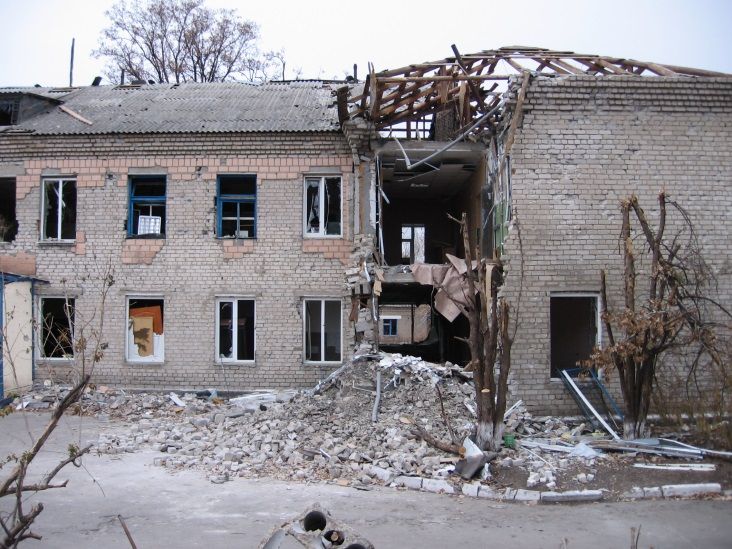
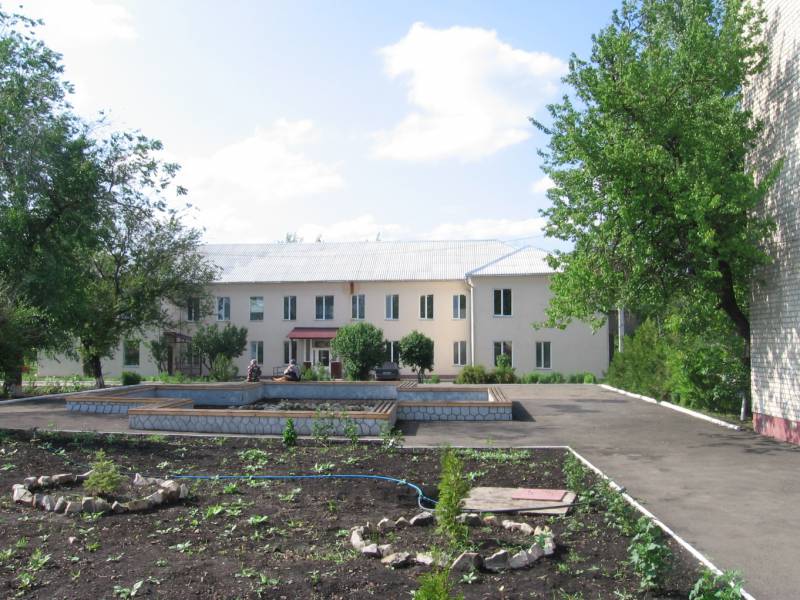
Novosvetlovka. Destroyed in 2014 and reconstructed in 2016 hospital building.
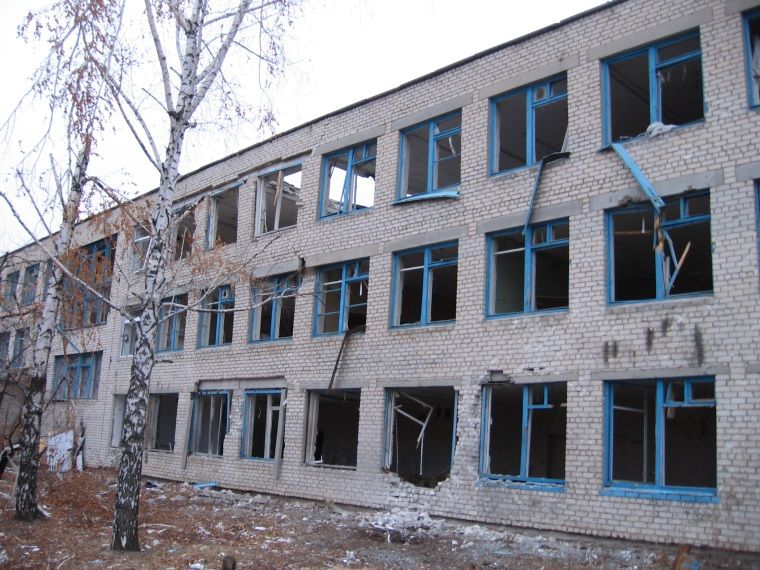
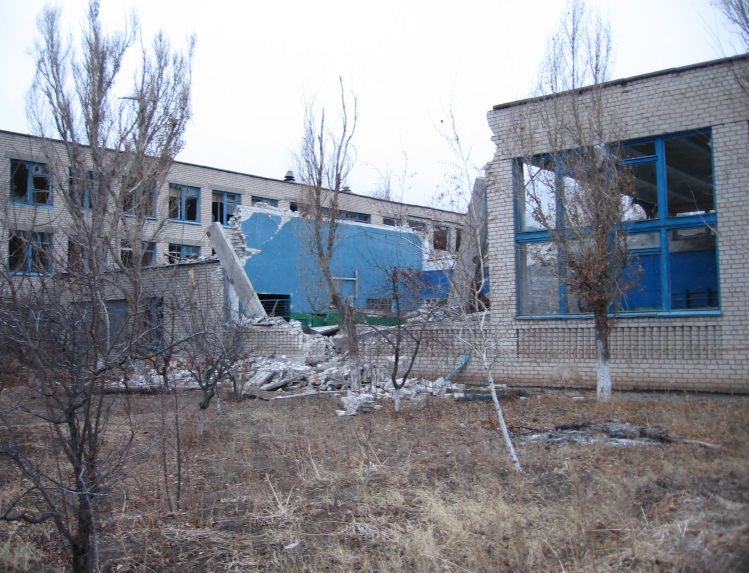
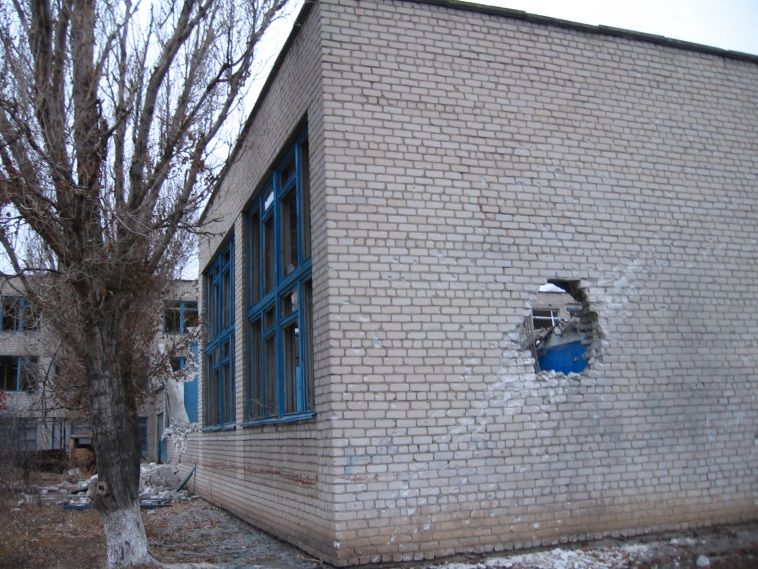

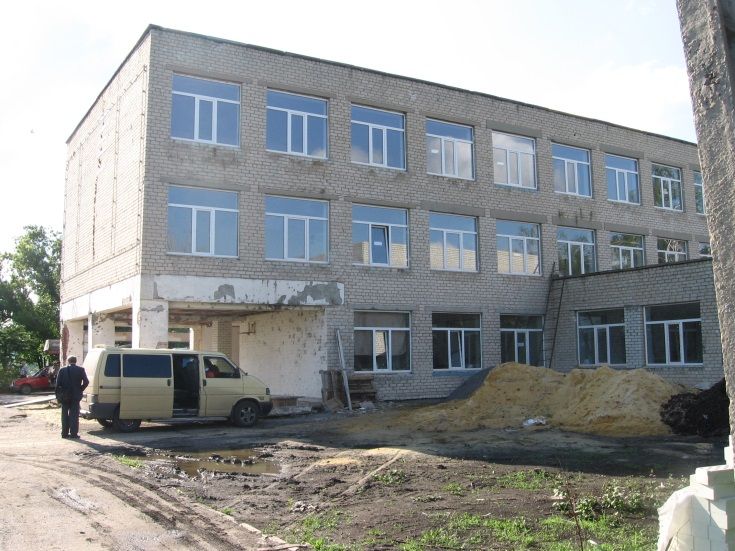
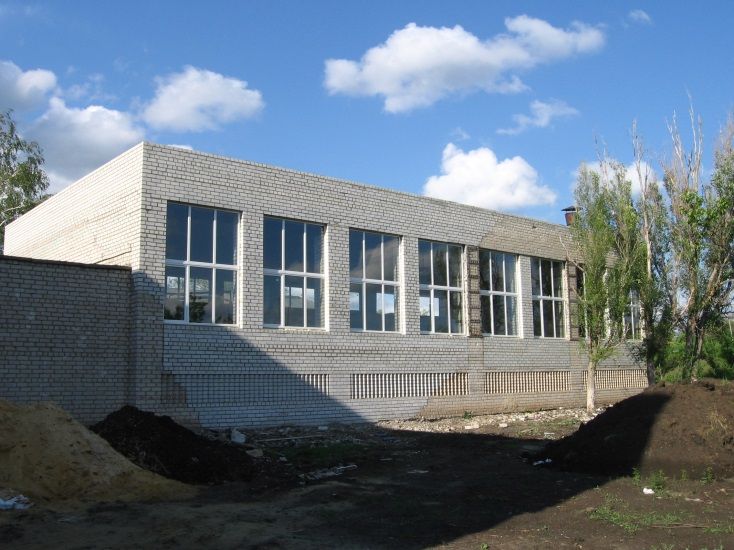
Novosvetlovka. Destroyed in 2014 and almost reconstructed gymnasium building in 2016 Classes will start here in September 2016.
The amount of work on reconstruction in self-proclaimed DNR is impressive. During visits to population centers, representatives of the monitoring mission checked the reconstructed schools, hospitals and living premises (including those damaged severely). Apart from that they also checked the newly built private houses as part of the “111 houses” program.
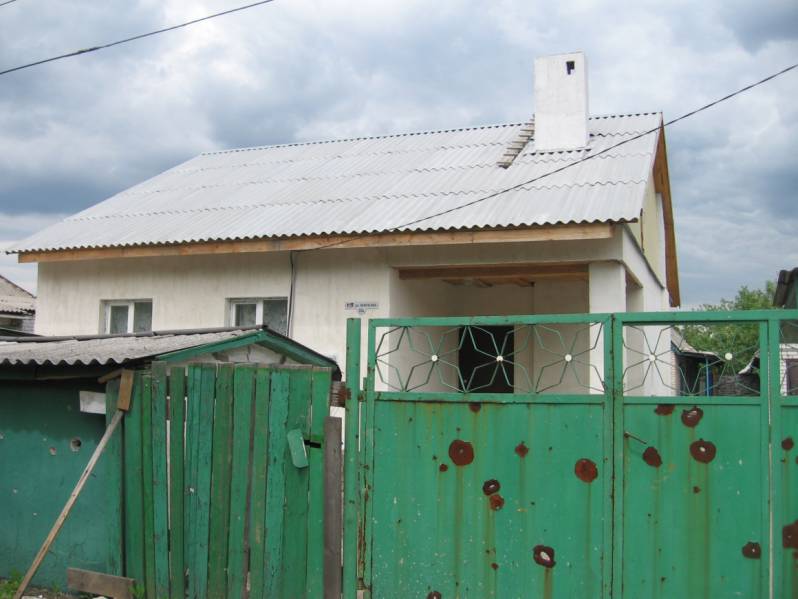
Uhlehorsk. House built as part of the «111 houses» program.
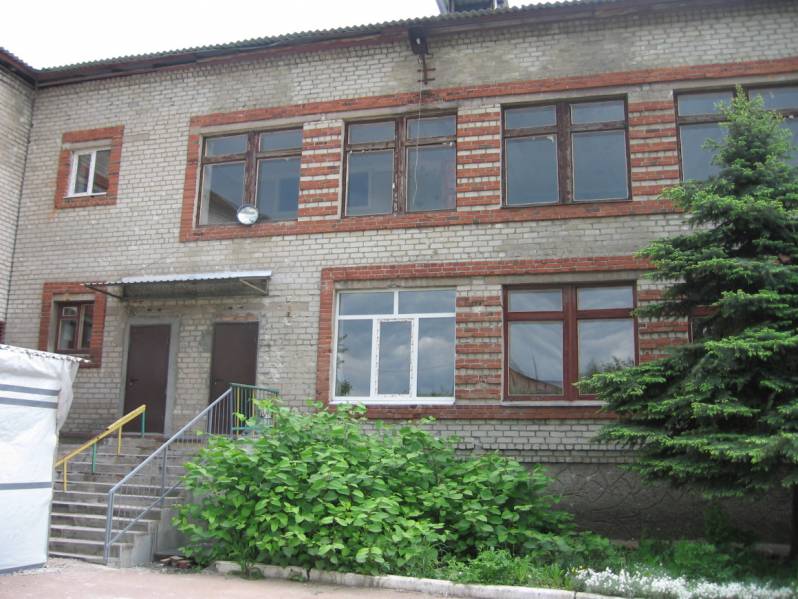
Uhlehorsk. Kindergarten No.63 – reconstruction in progress. This building had previously suffered shelling of roof and walls. On the day of visit to this town by the representatives of the monitoring mission, the reconstruction process had been almost finished. Interior repairs were yet to be done. The reconstruction was supposed to have been finished in May, but finishing date was moved because of lack of building materials.
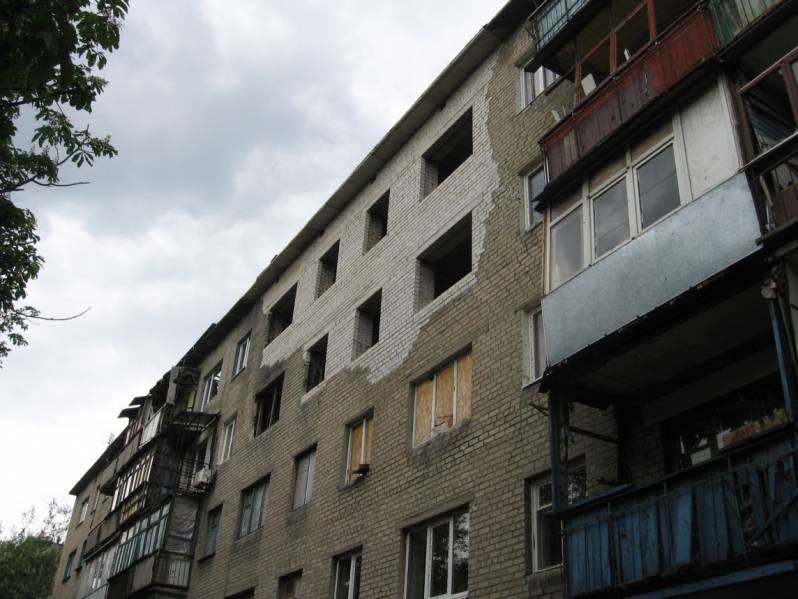
Debaltsevo. One of the multi-compartment buildings in the process of reconstruction on Lenin str. During the hostilities in January-February 2015 this building suffered a few shelling strikes which resulted in collapse of floor structure between two floors.
The inhabitants of multi-compartment buildings of Debaltsevo, destroyed during hostilities of January-February 2015 and then repaired in spring 2016 recalled the saying: “There was no fortune, but misfortune helped”. From their words, the houses they lived in never had any repairs since the 90s which lead to ramshackle of communication cables, water pipes and the roof which leaked during rains. Now their houses aren't just reconstructed, but the repairs included new water and sewer pipes, sanitary ware, window frames and even doors.
However, many multi-compartment buildings are yet to be repaired.
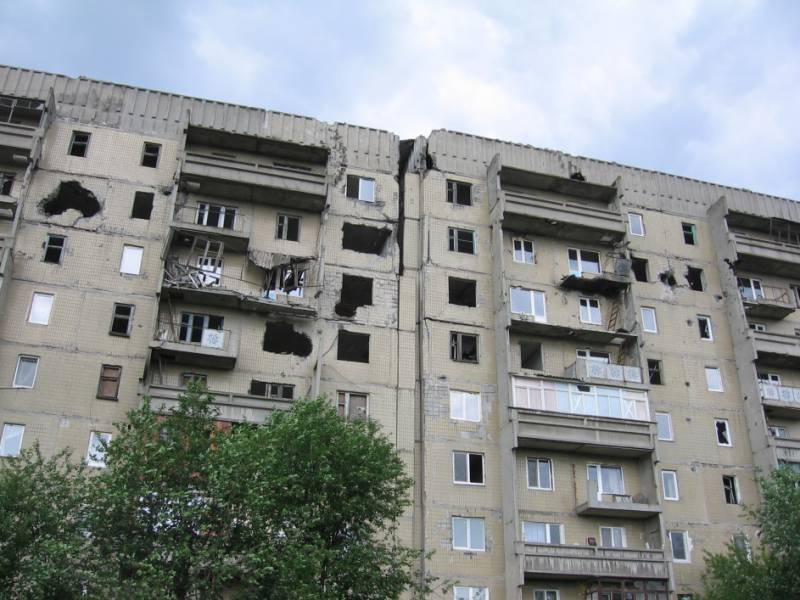
Uhlehorsk. From what we were told, during the advancement of separatist units they were using artillery fire to get rid of Ukrainian positioned on top floors of multi-compartment buildings.
All the people we talked to, both the officials and ordinary citizens, mentioned that the biggest amount of repair works is conducted with help from Russia. It also important to mention the contribution of the ICRC and the Czech humanitarian organization “People in Need” to the process of reconstructing destroyed buildings. However, their help was much smaller than that of Russia (according to calculations of the officials we talked to – around 3%).
Nevertheless we've been hearing many stories of delays with reconstruction because the building materials deliveries are getting delayed.
It should also be said that reconstruction programs include, primarily, multi-compartment buildings and, in certain amount, private houses that had been destroyed by 50% or more. In addition to that, in most cases, owners get just the building material (not always in the needed quantities), and the repair works should be organized by them individually. For a significant number of elderly people, living on pensions this way is impossible.
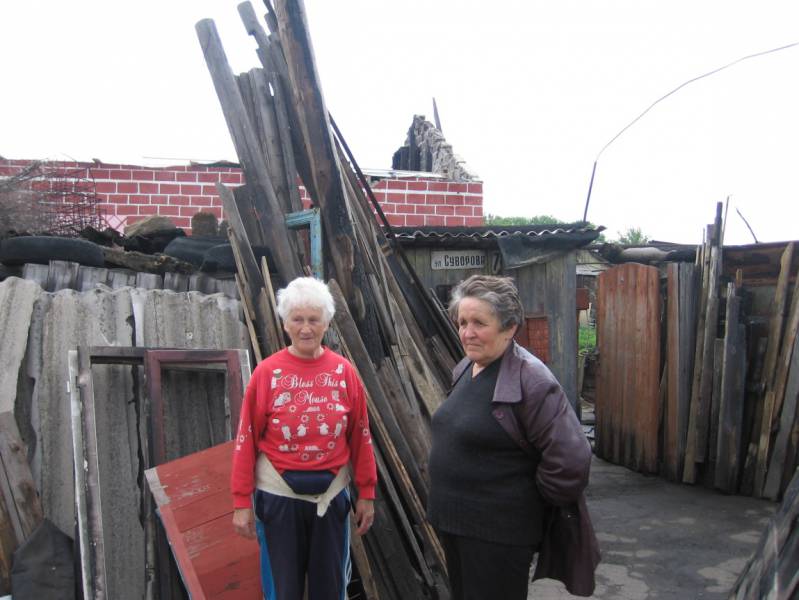
Uhlehorsk. Vera Fedorovna (on the left), 76 years old, lives with her 78 years old husband. In February 2015, a shelling dropped on the maintenance extention to their house, damaged the walls of the main house and, apparently, damaged the electrical system of the house. I fire started in the main house soon after that. The elderly couple asked the authorities to provide them with building materials to at least cover the broken roof. They were refused, reasoning the refusal with the statement that their house was damaged because of fire, not because of the hostilities. Currently the elderly couple live at their neighbor's house while the neighbor is travelling.
Her 76 years old neighbor, Nina Stepanovna (on the right) was given building materials to repair her house, damaged in result of shelling. But she doesn't understand how will she physically manage the repairs on her own.
Sadly the level of devastation is so high that regarding the current speed of reconstructing private sectors, it might take years to fully complete the process. The most optimistic scenario, if we use the data provided by the Ministry of Construction of DNR, repairing heavily damaged 3728 private houses will take one year. The repair of the remaining 13414 houses which can be repaired will take another almost four years. But the reality is that there might be noticeably more damaged and destroyed houses – as was mentioned before, inspection of the private sector had not yet been completed.
Concerning the same data, 1793 houses are beyond economic repair. In one year, instead of the destroyed houses, 129 new houses will be built. If the speed of construction stays the same, the remaining 1664 houses will take 12.5 years to get reconstructed.
On the territory of LNR, in the village Novosvetlovka alone 850 private houses were either completely destroyed or severely damaged. Even though the repairs of 13 multi-compartment buildings is coming to its end (one house is beyond economic repair), only 16 private houses have been repaired by May 2016 and another 25 new houses have been built. Obviously, reconstructing the whole housing area in this village will yet take a lot of time and resources.
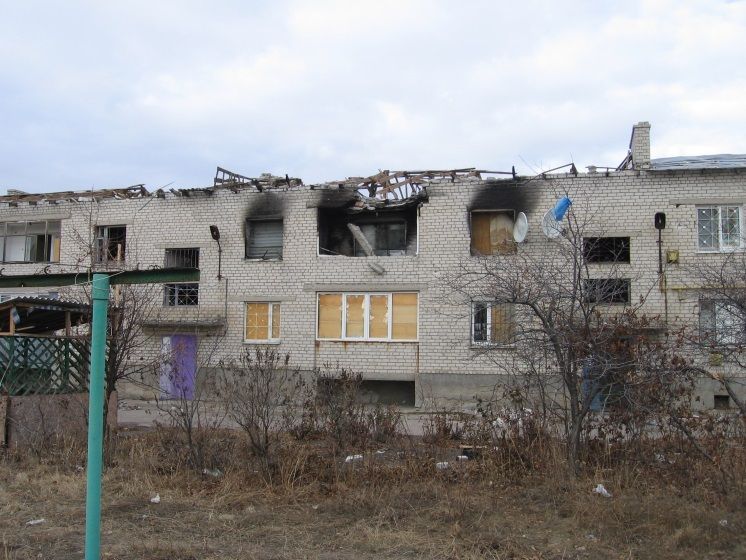
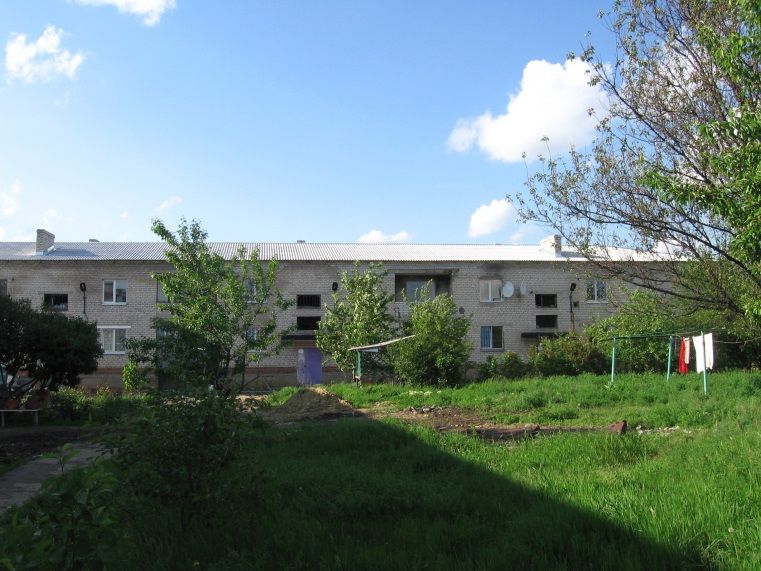
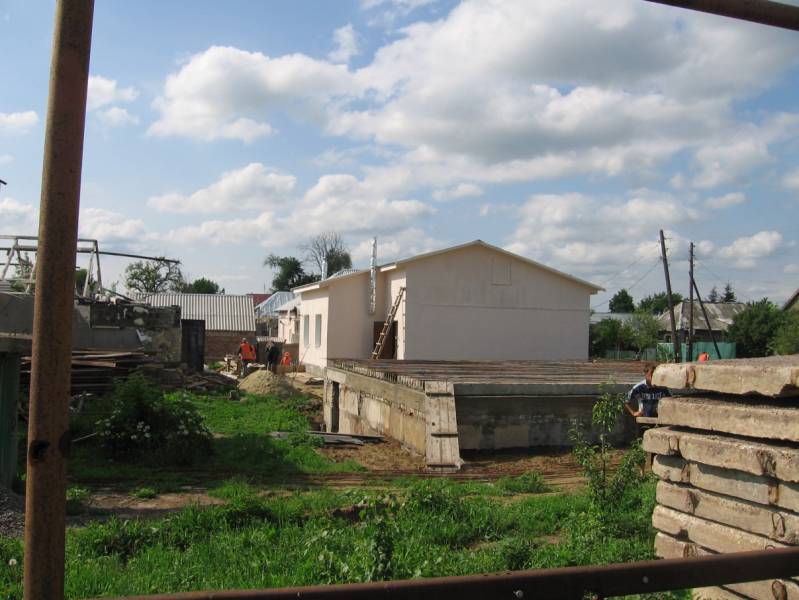
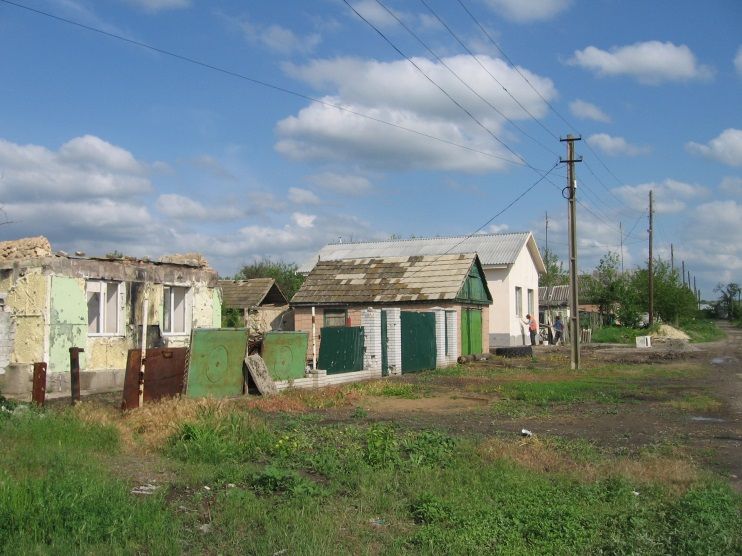

Will the reconstruction program continue? Can Russia, regarding its own developing crisis, keep up the current level of support?
We don't have an answer.
In general, however, the situation is totally different from that on the territory of Ukraine, where no national reconstruction programs take place at all. In the cases where such reconstructions took place (e.g. Sartana), it was sponsored individually by industrial companies (Metallinvest) or by from abroad, including NGOs (EU representatives in Ukraine, Danish Refugee Council, “People in Need”, “Caritas-Germany”). Alas, unlike in the self-proclaimed republics, Ukraine can't hope for help from Russia.
It should also be mentioned that the biggest damage during hostilities in certain population centers (Uhlehorsk, Debaltsevo, Ilovaisk, Khriashchevatoe, Nikishyno, etc.) was caused by forces of DNR-LNR (and Russian forces) during their advancement operations. During interviews, this fact was confirmed by DNR officials. Repair works in these population centers (apart from Nikishyno) are active and ongoing.
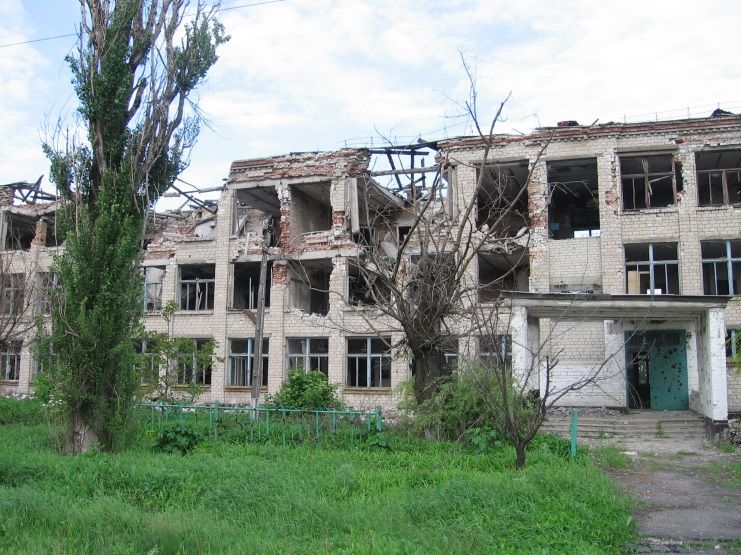
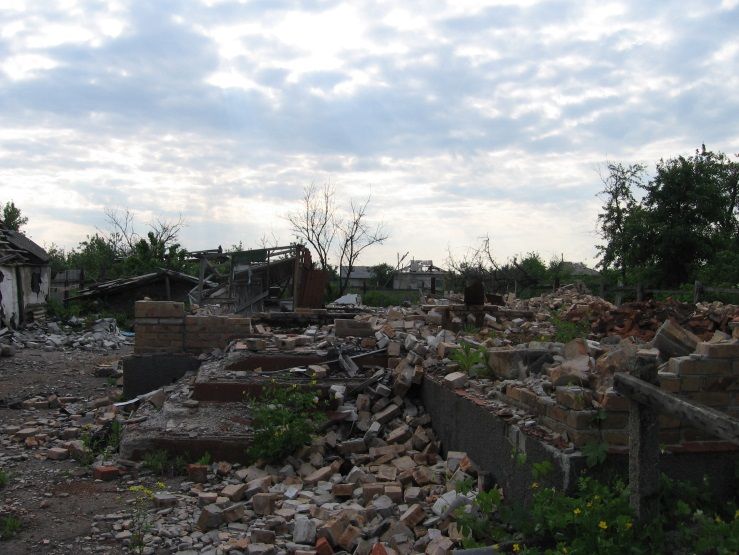
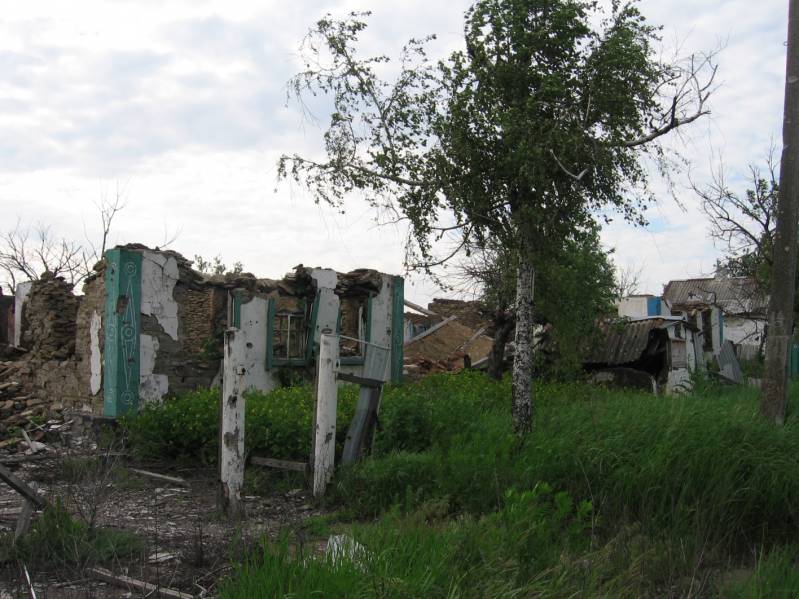

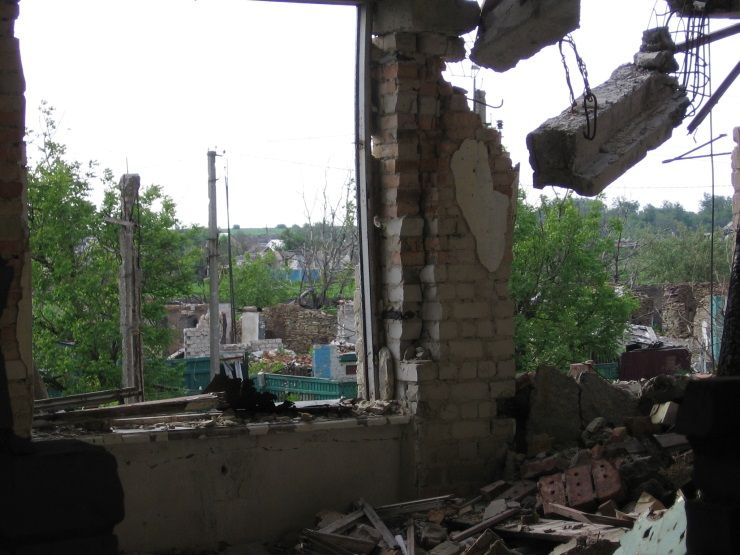
Nikishyno village.
However, reconstruction programs barely include regions neighboring the borderline both in Donetsk and other population centers. For example, Oktiabrskiy village, neighboring the former Donetsk airport, is a total devastation scene. Village “1ya Ploshchadka” (Donetsk) has had no water supply in houses for two years, many people spent winter with smashed windows. These regions strongly contrast the center of Donetsk, and this contrast is very noticeable to the inhabitants of outskirts.
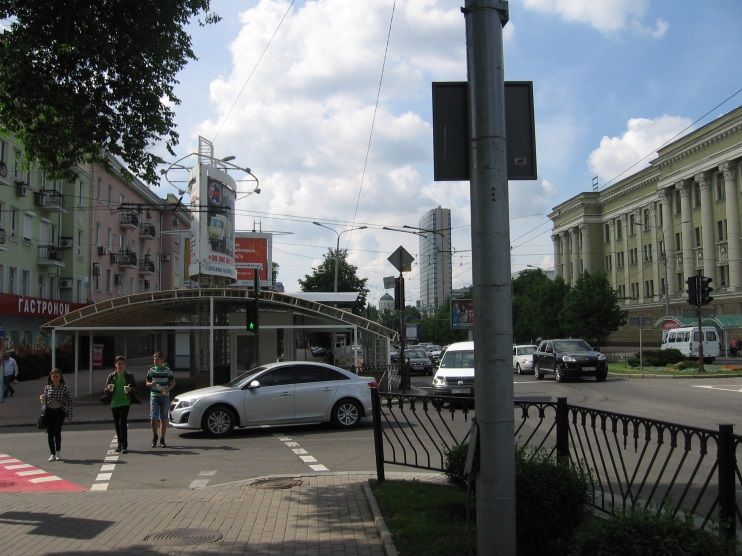
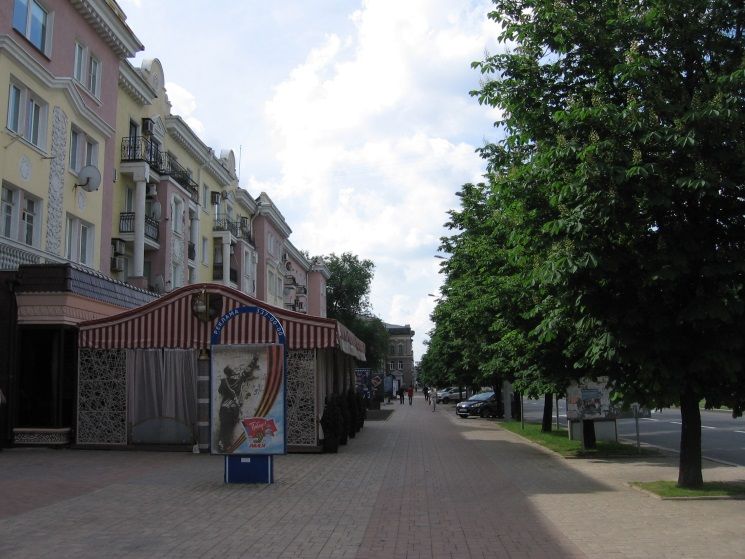
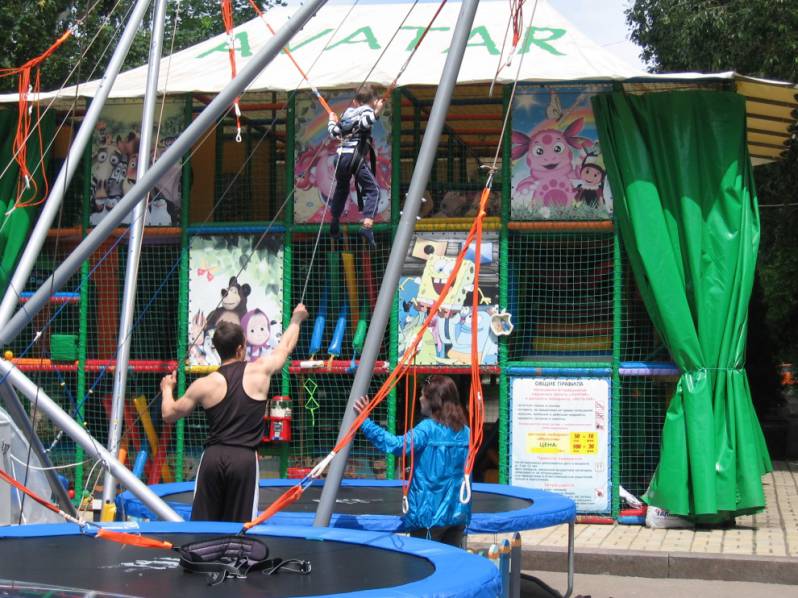
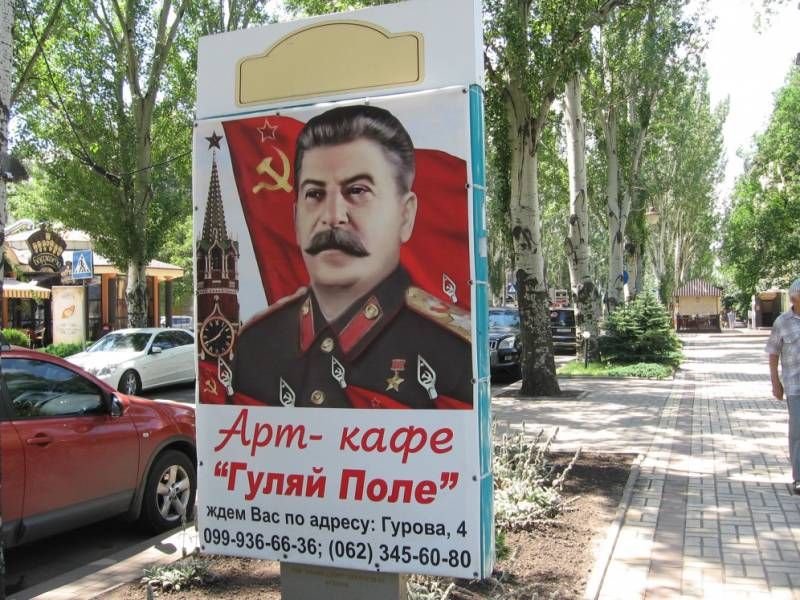
Centre of Donetsk.
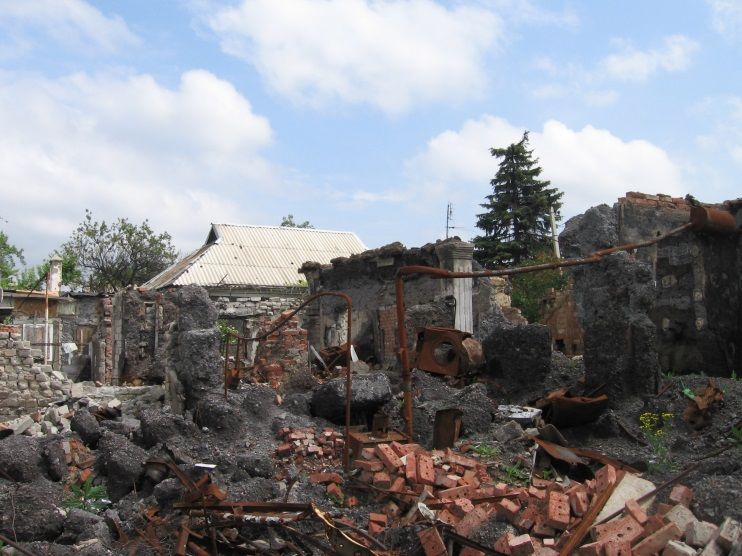
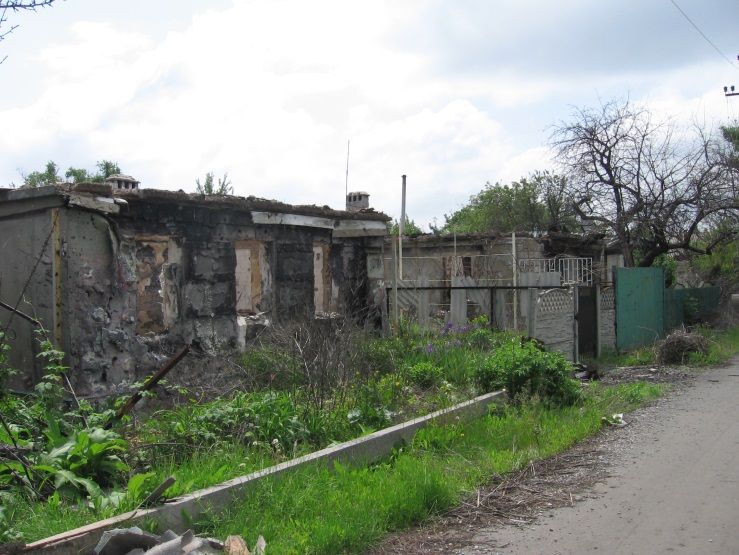
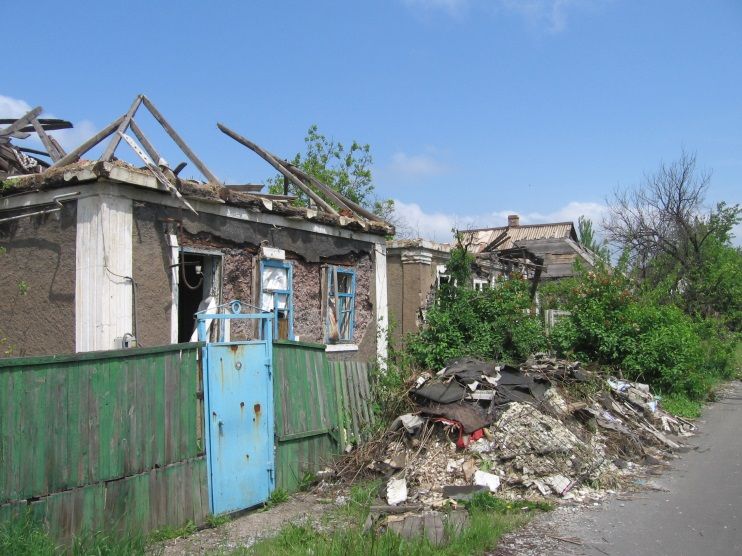

Donetsk outskirts, Oktiabrskiy village.
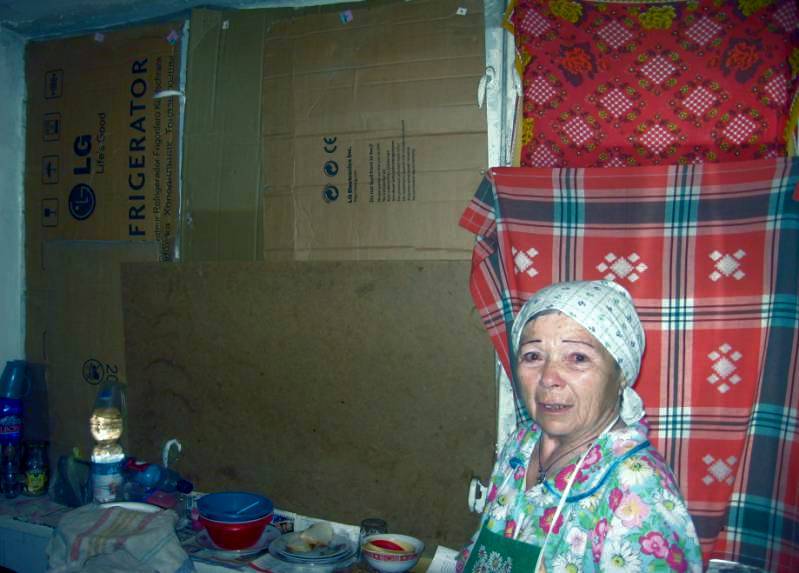
On 18th of July 2014 one of the apartments in house No.6 on Tumaniana str. (“1ya Ploshchadka” village) suffered shelling. Many apartments of the house have smashed windows after that day, some window frames were damaged. No humanitarian aid was given by the authorities. Since then windows in Apt. No 18, where lonely 80 year old Leonida Iakubovna Kuprianovna lives, have been covered with plastic film, blankets and cardboard. She survived two winters with this. Her pension is 2300 RUR. Authorities say that houses in “1ya Ploshchadka” village will only be repaired after peace is reached between sides of the conflict and shooting will stop.
Peculiarity of this situation is in the fact that the villages subject to reconstruction are mainly those, that had been destroyed as result of DNR-LNR and Russian forces actions. Those residential areas that suffered as result Ukrainian artillery fire are less reconstructed.
Unlike Russian practice and reconstruction works in South Ossetia show, we never heard any statements about theft of building materials meant for reconstruction. Even more surprising is the fact that during construction of 111 private houses instead of those destroyed, saved resources were invested into building another 18 houses.
Forced in-migrants
The problem of people forced to have fled their places of inhabitance because of hostilities is a large scale problem. Nevertheless self-proclaimed DNR did not implement any forced in-migrant or IDP status that would allow receiving social payments and benefits. With the help of the Authorized official on human rights in DNR, people of this category are placed in temporary settlements.
According to the information, shown on the website of the Authorized official on human rights of DNR, there are currently over 8404 official forced in-migrants on the territory of DNR, including 1240 underage individuals. 3253 of all the current in-migrants, including 636 underage individuals, live in temporary settlements. 5151 people, including 1504 underage individuals settled with relatives or friends, some of the in-migrants have capabilities to rent temporary residential space.
86 temporary settlements had been created on the territories controlled by authorities of self-proclaimed DNR. 60 of them function (in Donetsk, Makeevka, Khartsizk, Zugres, etc.), 26 are in reserve. The currently functioning temporary settlements have 2146 vacant spaces.
Members of the monitoring mission visited one of the temporary settlements in Donetsk, house No. 6 on Rozy Luxembourg str. There are only 495 living there. 120 out of them are people with no homes on the territories controlled by DNR authorities, not even destroyed homes. These are mainly inhabitants of population centers based in the part of Donetsk region, controlled by Ukrainian authorities. Some of them had been actively organizing the referendum in May 2014, some – combatants in the conflict, some used to be captured or arrested and then exchanged for Ukrainian soldiers, captured by DNR units. These people have no opportunities to move from the temporary settlements. Some of settlement inhabitants have been living there for 2 years.
Rooms, where the people live, are meant for four to eight people. There is furniture and bed sheets. Inhabitants are given free food. They don't pay for the premises and the utility services. There is water, electricity, a kitchen with electrical stove on every floor, meant for cooking food. However, they often brake because of overuse and the inhabitants are forced to pay for the repairs personally.
Children of in-migrants are accepted to schools and kindergartens with no problems.
Nevertheless, there are serious problems. Starting June 2016 humanitarian aid from Russia, which used to be given every month, is only given to retirees (with pension of up to 2100 RUR), families with children of under 3 years old, multi-child families, disabled people of I and II disability categories.
Medical services are formally free of charge, but in reality, according to the words of temporary settlements inhabitants, everything needs to be paid for. Even when the Ambulance arrives on call, the in-migrants are often denied hospitalization.
In-migrants have significantly more problems finding a job than even locals.
School education
In certain population centers visited by the monitoring mission members, we inspected schools, talked to teachers and principals. This allows us to generalize certain information.
Education process usually stopped only during most intensive shelling, or in those schools which had been severely damaged.
Education process, in most cases resumed on first opportunity.
Most school buildings which were damaged, had been restored with high priority. In a number of cases principals told us that they never hoped in the past that their schools would be in such a good state. Only a few schools hadn't resumed the education process, because their buildings took too much damage or are too close to the borderline between the sides of the conflict.
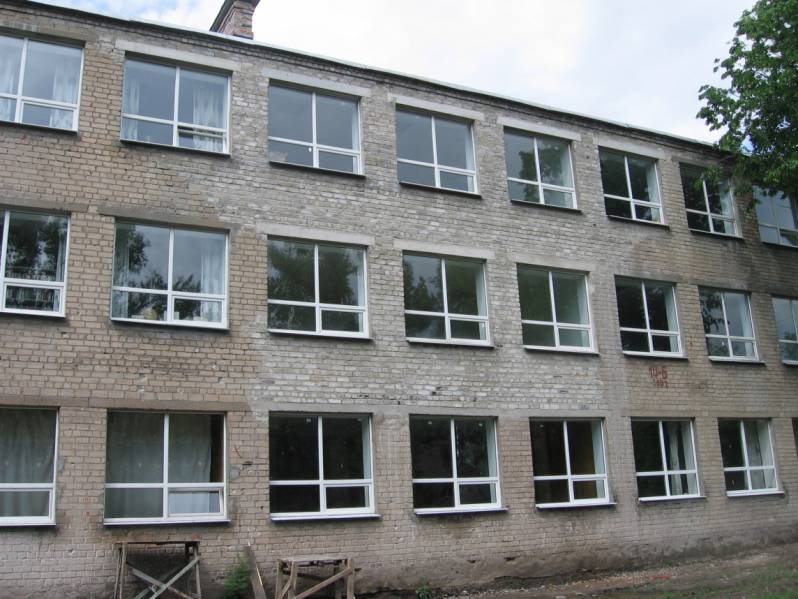
Debaltsevo. The building of school No.6 took a number artillery hits. In February 2015 a missile from a multiple launch rocket system (MLRS) “Uragan” destroyed the floor structures between 1st and 3rd floors in the middle of the main building. Currently the building is fully restored and the education process is resumed.
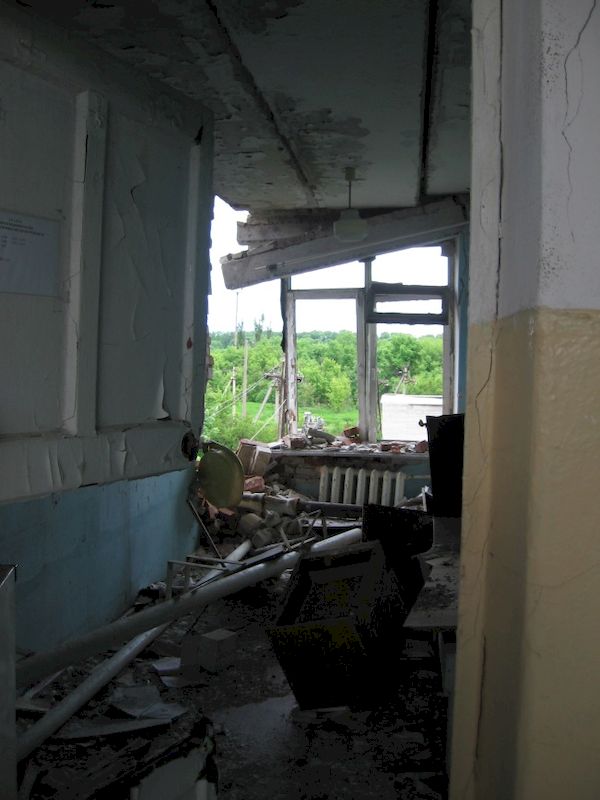

Debaltsevo. The building of school No. 7 hasn't been restored yet.

Uhlehorsk. The building of school No. 42 took six artillery hits during hostilities in January-February 2015. The building hasn't been restored yet.
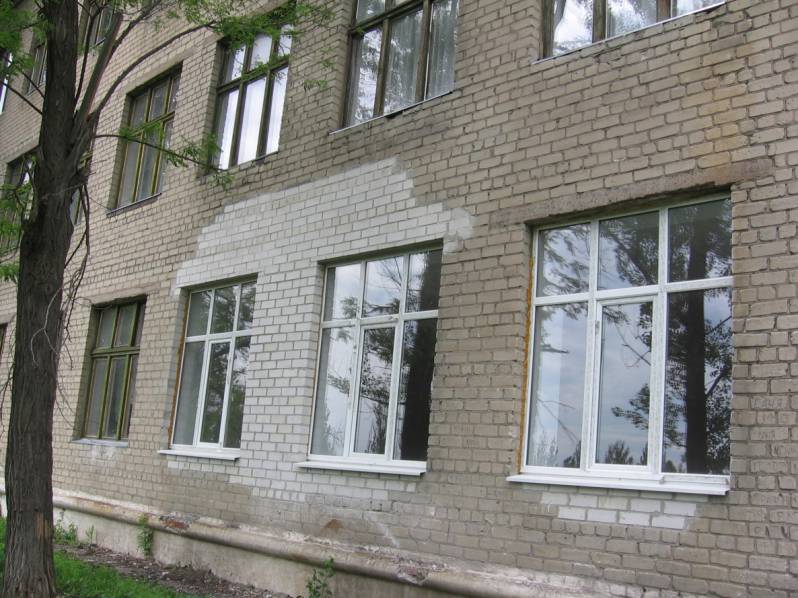
Currently Uhlehorsk has one working school No.41, the building of this school had two holes from artillery hits, the roof was also damaged. The building is currently restored and education process resumed, however the school is overwhelmed with pupils.
In 2015 the Ministry of education of DNR approved the new school program. Currently the education process is conducted using, mostly, Russian textbooks; in 2015 schools received textbooks from Russia in the needed amount.
All the teachers are present, we received no complaints on lack of teachers. Teachers receive their salaried in time and with no delays.
Number of hours, given to learning Ukrainian language and literature has been strongly reduced. Ukrainian literature, for example, is given 1 hour per week.
Number of Ukrainian classes in schools has been strongly reduced. Only two schools out of all we inspected had one Ukrainian class each, other schools, including those which used to be Ukrainian schools, have none.
The DNR Ministry of eduction and science's report from 2015 states that «the need for language education by the population is fully satisfied in DNR. If in 2014 preschool education establishments had 10.5% of children been raised in Ukrainian and 89.5% in Russian, then in 2015, 100% of children are raised in Russian at parental will».
This “language question” wasn't “finally solved” on the level of middle schools:
“In 2015-2016 academic years 6780 (97%) classes started in Russian, they have 125984 (98%) pupils. 170 (3%) classes started in Ukrainian, they have 2358 (2%) pupils.
For comparison:
In 2014-2015 academic years there 4723 (65%) classes with Russian as education language, they had 99202 (71%) pupils; 40519 (29%) pupils studied in 2496 (35%) classes with Ukrainian as their education language.
Thus the number of Russian classes grew by 2057, the number of Ukrainian classes decreased by 2326.
DNR has 431 (88%) general education organizations, implementing pedagogic activities only in Russian (with no Ukrainian classes) and 3 (1%) general education organizations, implementing pedagogic activities in Ukrainian (with no Russian classes). 54 (11%) general eduction organizations in DNR pedagogic activities are conducted in both Russian and Ukrainian.”
Weekly hours, provided by the “basic plan” for Russian and Ukrainian languages (and literature) also deserve attention:
| Grade | Russian schools | Ukrainian schools | ||
| Russian language and literature | Ukrainian language and literature | Russian language and literature | Ukrainian language and literature | |
| 1 | 6 | 3 | 4 | 5 |
| 2 | 8 | 3 | 6 | 5 |
| 3 | 8 | 3 | 5 | 6 |
| 4 | 8 | 3 | 6 | 5 |
| 5 | 8 | 4 | 7 | 5 |
| 6 | 7 | 3 | 6 | 4 |
| 7 | 6 | 3 | 5 | 4 |
| 8 | 6 | 3 | 5 | 4 |
| 9 | 5 | 3 | 4 | 3,5 |
Russian language is given significantly more time everywhere apart from 1st and 3rd grades in Ukrainian schools.
In this sense, the situation in schools on the territories of Donetsk and Luhansk regions which are controlled by Ukrainian authorities are a marked contrast. Balance between the number of Russian and Ukrainian classes in schools before the conflict and in 2015-2016 almost didn't change here. Members of the monitoring mission noted this during their visits to schools, the same is stated in the official statistics report in Donetsk region.
| 2014-2015 academic year | 2015-2016 academic year | |
| Ukrainian schools | 327 | 321 |
| Russian schools | 76 | 54 |
| Bilingual schools | 213 | 186 |
| Ukrainian classes | 5345 (61%) | 4862 (62%) |
| Russian classes | 3386 (39%) | 2924 (38%) |
The current situation on shelling
By the time we travelled for our second trip, the situation in the conflict zone in the East of Ukraine deteriorated: according to UNO data, June 2016 has shown peak numbers of conflict civilian victims on both sides of the borderline in the previous ten months. This has been reported by the UNO Administration on coordinating humanitarian issues.
As of from 1st to 30th of June the UNO Administration of the High Commissioner for Human Rights recorded 69 cases where civilians suffered during the conflict. 12 of those cases were lethal, in the other 57 cases people sustained injuries. Together with that 14 people sustained injuries and 5 people died, blown up on land mines or unexploded shells. Report authors state that shelling took place «using different artillery systems, including calibers, prohibited by the Minsk agreements».
During the second monitoring mission to the territories beyond the control of Ukrainian authorities, members of the mission visited 16 places, which had suffered shelling with mines or other shells around end of May – beginning of June 2016, causing damage to civil objects. These cases took place around Western outskirts of Donetsk (Lenkoranskaya str., Tumaniana str., Shakhterskoy Slavy str., Prepodavateley str., Selidovskaya str., Biriuzova str.), around Western and North-Western outskirts of Dokuchaevsk (Komsomolskaya str., Lenin str.) around Western outskirts of Horlovka (Fadeeva str., Pokydko str.,), in Makeevka (Tukhachevskoho str.). In the cases examined by us, damage was sustained by multi-compartment buildings and private houses, three civilians were injured (one 77 years old woman and two men), one 53 years old man died.
Shell craters left from the shelling, blast fragmentation markings, the fragmentations which we picked up, character of devastation and stories of eyewitnesses point out that during the shelling conducted by the Ukrainian side, weaponry they used, according to Minsk agreements, should have been withdrawn from the borderline (artillery, mortar launchers). Cases of massive strikes or cases of using multiple rocket launchers had not been detected.
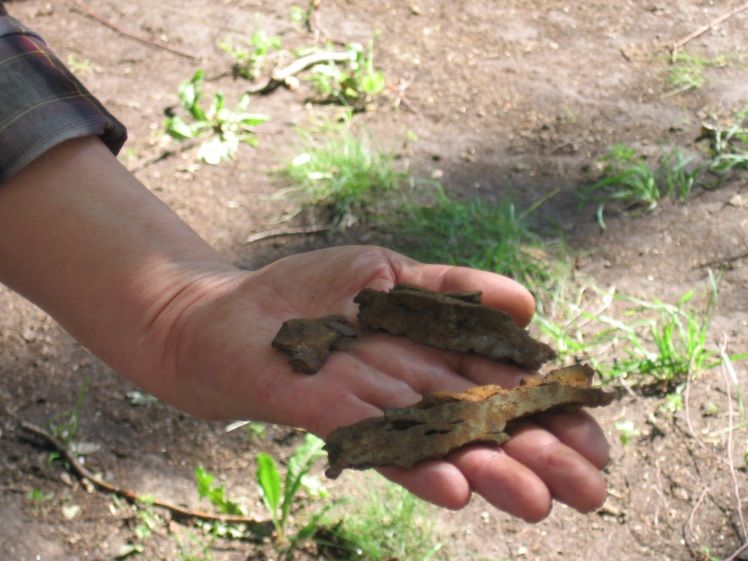
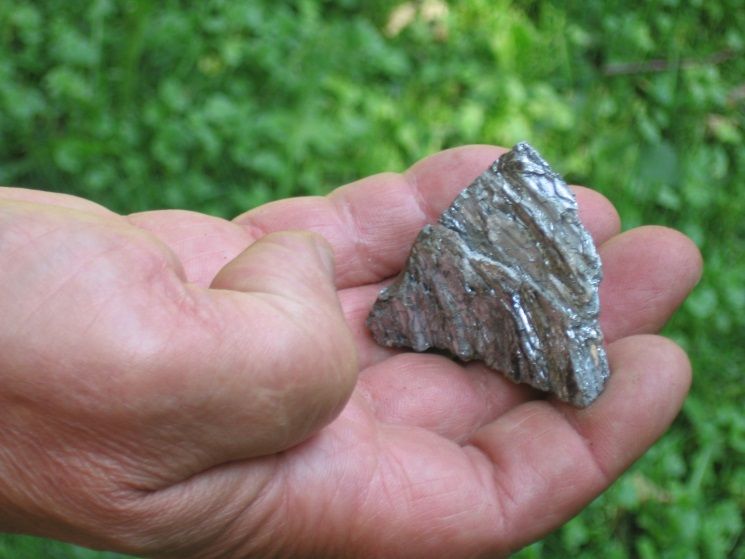
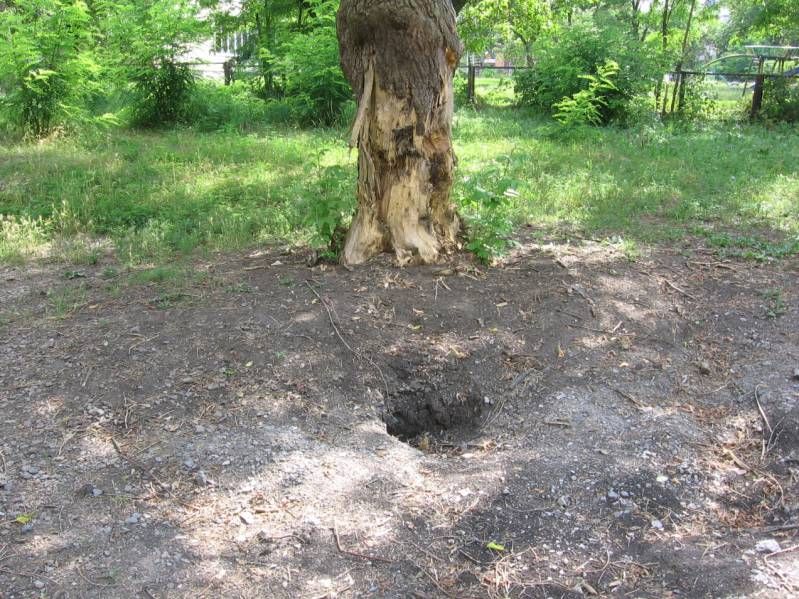
Shell crater left by a mine on the night to 28th of May 2016 in the backyard of house No.12 on Lenkoranskaya str. (Donetsk, “1ya Ploshchadka” village).

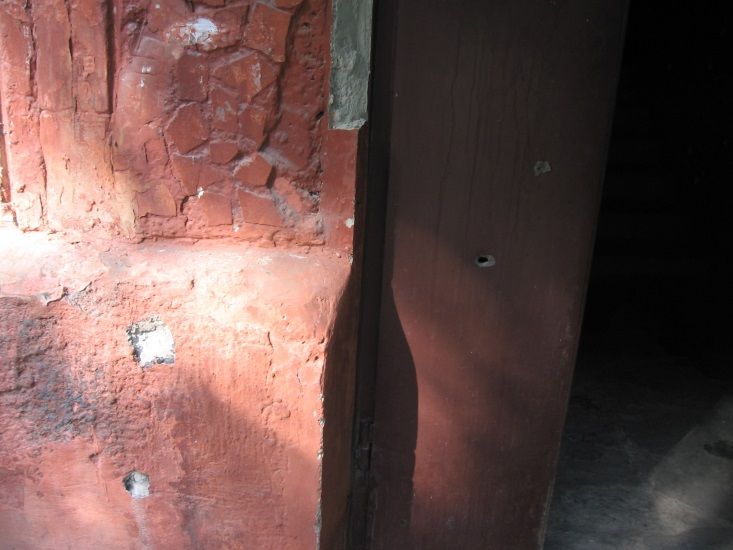
Shell crater left by a mine on the night to 28th of May 2016 near house No.7 on Shakhterskoy Slavy str. (Donetsk, “1ya Ploshchadka” village). House wall is marked by shell fragmentations, some windows smashed, one of the fragmentations penetrated the door.
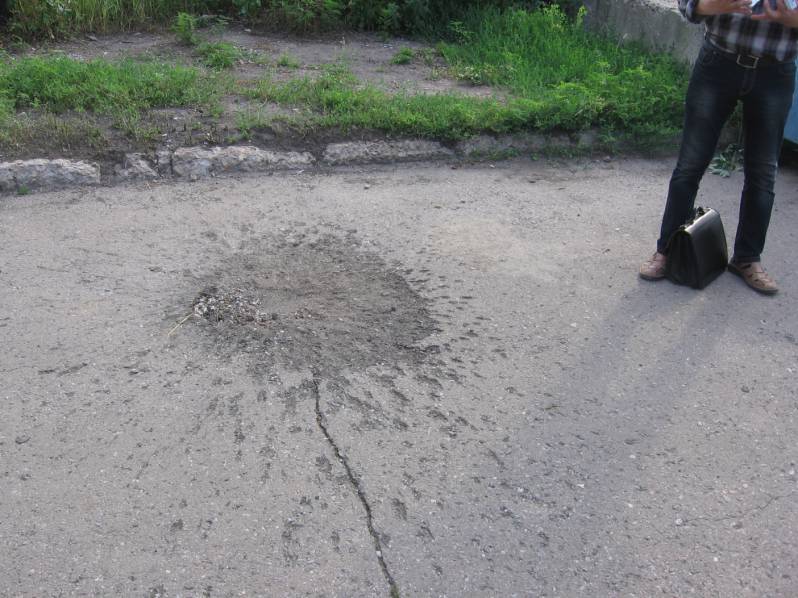
Mine explosion marking on Shakhterskoy Slavy str. on the night to 28th of May 2016.
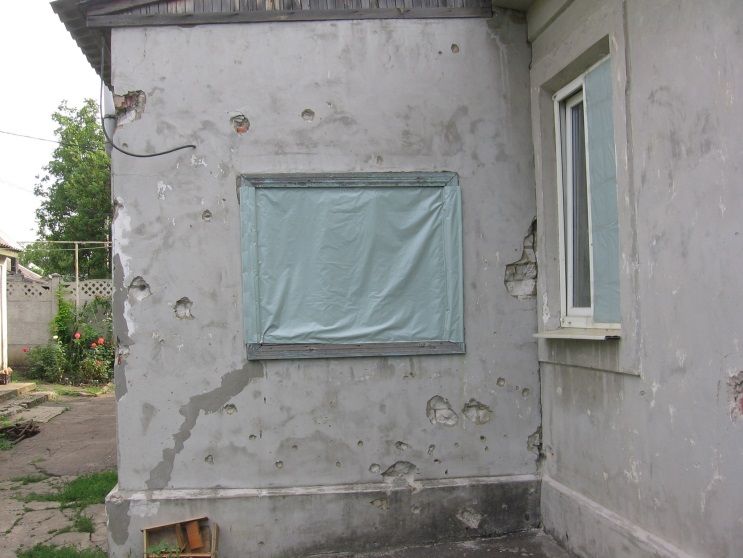
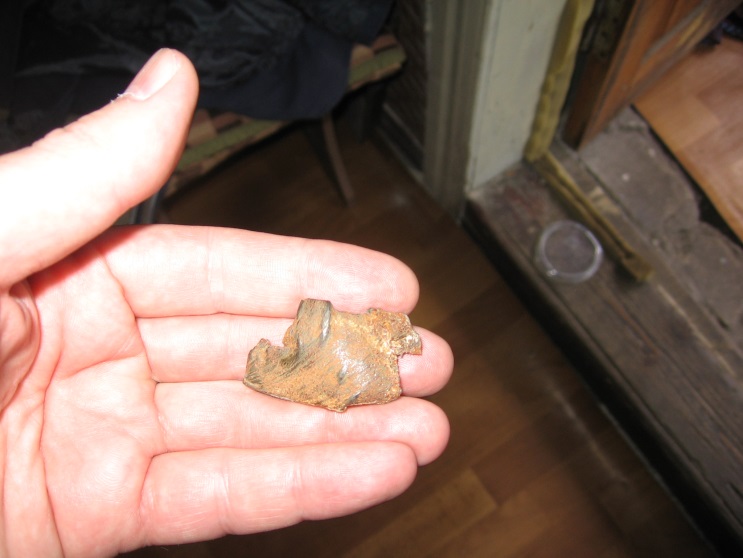
On the night to 28th of May 2016, apparently, the mine exploded in the backyard of house No.4 ул. On Prepodavateley str., (Donetsk, “1ya Ploshchadka” village).
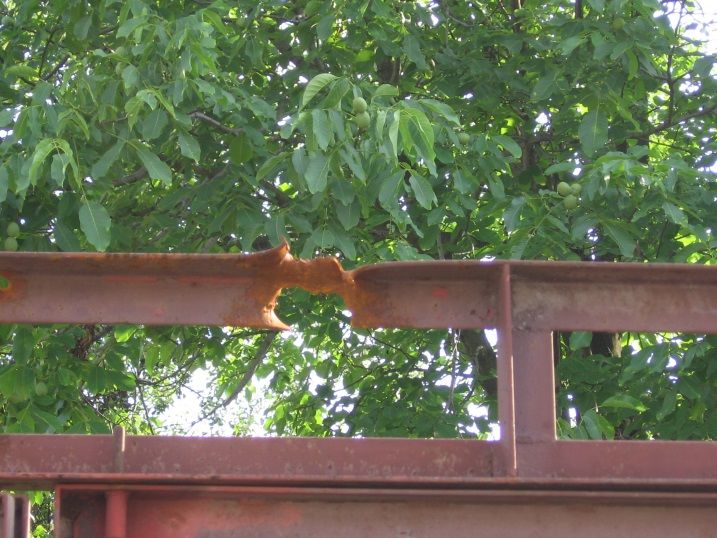

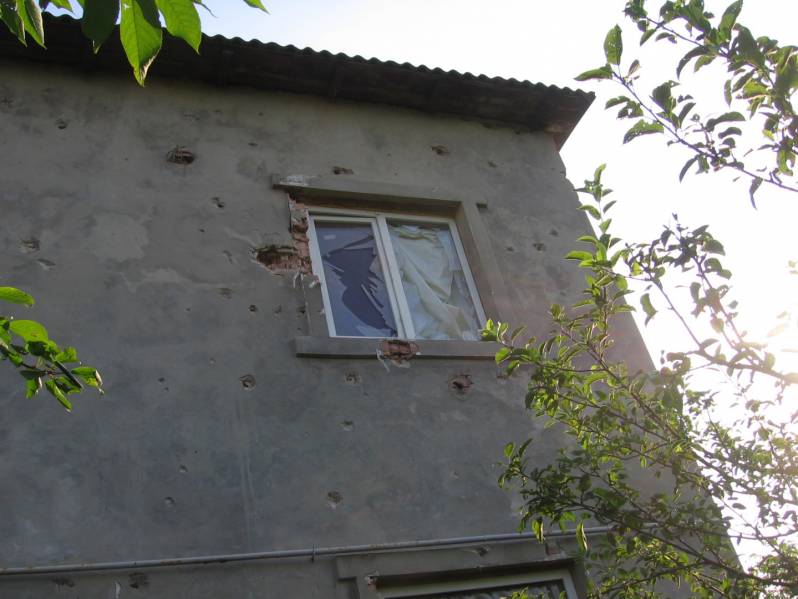
Blast fragmentations marked the roof, smashed the windows in this house and the neighboring house No.2, penetrated the metal fence and gates, flew across the street and marked the roof of house No.9.
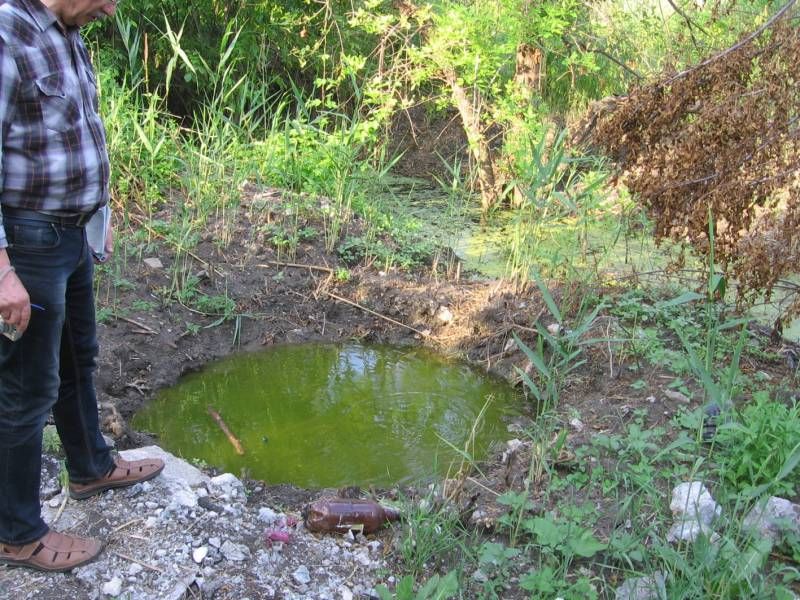
Crater left from a shell explosion approximately 100 meters away from residential area on Prepodavateley str. The shelling took place in the beginning of June 2016.
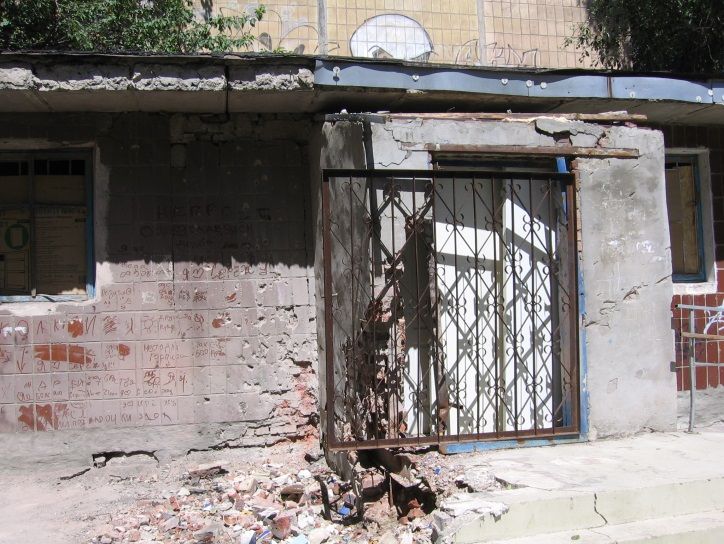
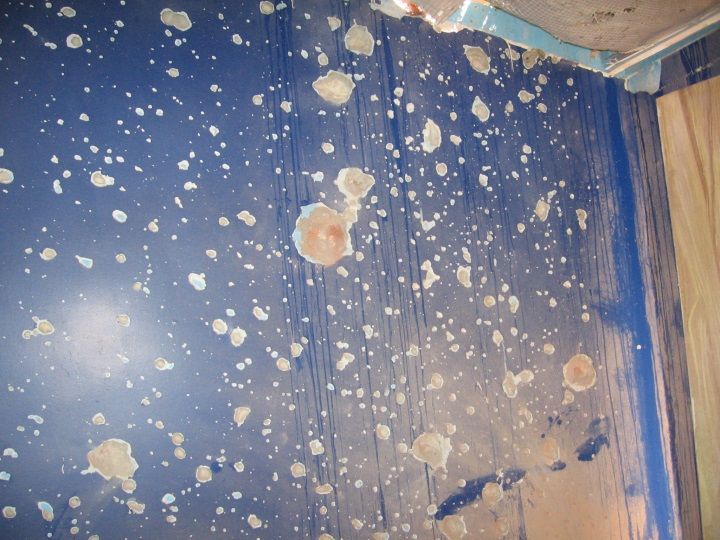
At 0100 on the night to 24th June 2016 a shell, supposedly a 120 mm mortar mine, exploded at the entrance to a pediatric clinic based on the first floor of house No.35a on Biriuziva str. (Donetsk), Terrace steps damaged, metal door blown out, windows smashed, sometimes together with window frames, fragmentation markings on the wall, ceiling of the clinic, extended from the multi-compartment house, shifted, creating an open crack between the ceiling and the wall. As result, premises of the clinic require capital repairs. Currently, pediatric patients are being received in other cabinets of the centre.

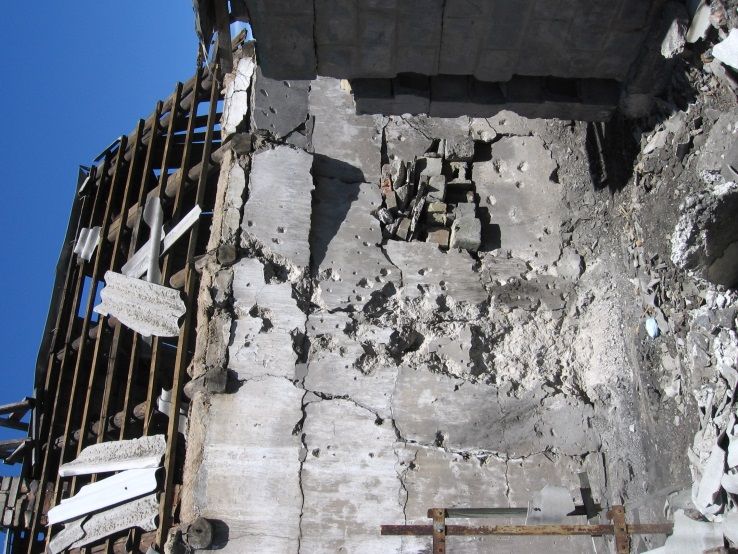
On the night to 29th of June 2016, the roof of house No.12 on Selidovskaya str. (Donetsk), was hit by a mine. As result – two people injured: 77 years old Alexandra Havrilovna Khrystiuk and her 53 years old son Alexander Ivanovych Khrystiuk. Both of them were transported to hospital, where Alexander Ivanovych died. Another mine landed in the yard of a neighboring house No.10.

On the night to 5th of July, around 2320 a mine landed and exploded in the yard of a multi-compartment two-storey house No.20 on Stepanenko str. (Donetsk). The mine hit a bus, parked near the garages in the yard by its driver, who lives in this house. The mine went through the roof of the vehicle and destroyed the propeller shaft. Two men enterting the house that moment were injured by the blast fragmentations.
The character of the bus damage, energy of the explosion, which left some windows of the house untouched, small blast fragmentations (photo) point out that this shell was a mine of 82mm caliber. This is also pointed to by the fin-stabilizers found after the explosion. Pictures of the fin-stabilizers was shared via internet. With regards to this a number of Ukrainian commentators claimed that the mine had been fired from the DNR positions, as 82mm mortars are said to have a shorter range than needed to fly in from Stepanenko str. – where Ukrainian positions are based. However, the direction from which the mine flew in is quite clear – from the direction of village Peski, and the maximum range of a mortar like that is 4km, which is just enough to reach borderline.
Obviously, even after signing the Minsk agreements, heavy artillery shelling continues from both sides of the conflict. Though civil objects are not targeted by these hits, quite often they get the biggest damage. All cases like this took place close (4-5 km) from the borderline between the sides of the conflict. In Horlovka, around 250m away from the point where a few mines landed on 24th of June, was the HQ military position, which, apparently was the target. In any case, there was a big shell crater near it on the street.
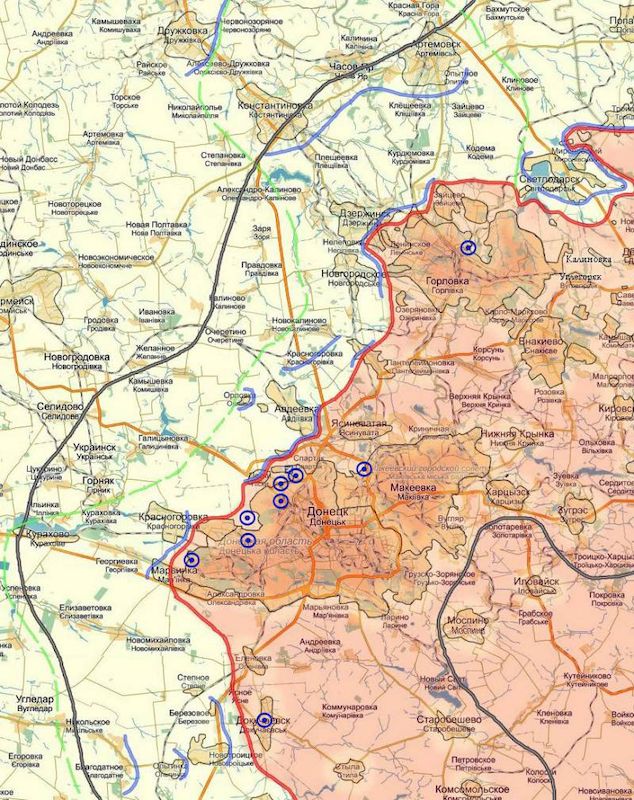
Places of recent shelling, visited by members of the monitoring mission.
Citizens of some Donetsk districts, located near the borderline, complained that at night times self-propelled artillery platforms station near their houses. These self-propelled artillery platforms fire towards positions controlled by Ukrainian forces. We were told of such cases in Kuibyshevskiy region (“1ya Ploshchadka” and “2ya Ploshchadka” villages, Oktiabrskiy village) and in Kyiv district (Biriuzova str.). People fear that return fire would inevitably cause new devastations and civilian deaths. In one case we clearly spotted the place where previously (in the beginning of June) four self-propelled artillery platforms held position and, from the words of eyewitnesses from locals, delivered a 40 minute fire in Western direction (approximately towards village Krasnohorovka). We registered caterpillar tread marks on sand and grass, clearly spotted the places where the machines delivered fire from.

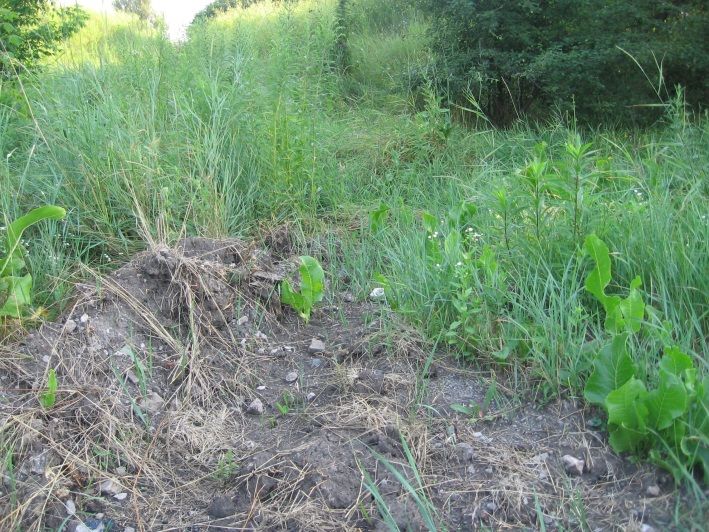
Locals also told us that they wrote a letter to the head of DNR – Zakharchenko A. with request to control and stop cases of delivering fire from residential areas. However, they wished to personally deliver this letter to Zakharchenko, fearing that it would not reach the addressee which would cause repressions against them as authors. Currently they didn't succeed in reaching the head of DNR.
In relation to the aforementioned we consider it important to stress attention on two circumstances:
– During the monitoring mission to village Krasnohorovka (based on the territories controlled by Ukrainian authorities), members of the mission were told by locals about a case of delivering mortar fire by Ukrainian forces towards a residential area of Donetsk.
– Donetsk citizens, who were telling of night fire delivering from the residential areas talk of these cases very quietly and ask not to point out their names anywhere, and not to point out their place of inhabitance. They are very scared of possible repressions against them for these stories from members of armed military groups of DNR. “If you point at us, they will come to us and they will kill us all” – these were the words addressed to the members of the monitoring mission by inhabitants of one of the outskirts of Donetsk.
At the same time territories controlled by Ukrainian authorities have complaints from locals, sometimes absurd, sometime fair, but usually loud and clear, without hiding their names and places of inhabitance, sometimes on camera. They don't fear consequences. When talking to inhabitants of Krasnohorovka during the monitoring mission on territories controlled by Ukraine, members of the mission heard the next description of the situation with delivering fire from the territory of the village: “The machines stand in between buildings, fires, moves to another location and fires again. People heard from other locals that those people saw machines firing near the hostel on Lenin str., on 20th of June. The same was on Solnechanya str. Mortars firing. Around the former “Mayak” company, where a military base use to be. It's not there anymore, but soldiers drive out there and fire from those positions. Return fire from DNR in its turn hits residential areas. In general, both sides deliver fire.” Members of the mission failed to prove validity of this information.
Main conclusions and recommendations on results of the monitoring visit and analysis of the situation on territories of Donetsk and Luhansk regions which are beyond the control of Ukrainian government
• The territories of self-proclaimed DNR and LNR in the East of Ukraine have Governing bodies that de-facto exercise government functions. Conditions created on these territories make it significantly more difficult for NGOs to monitor the situation on human rights, international humanitarian legislation abidance and social-economic conditions of civil population.
• With the help of significant financial allocation from the Russian budget the social-economic situation on self-proclaimed DNR and LNR got noticeably better since spring-summer 2015 and is no longer close to the level of humanitarian disaster. Nevertheless, social-economic situation of the majority of people stays quite difficult, some population categories survive only on humanitarian provision aid from Ukraine and Russia.
• Large scale reconstruction works are taking place on the territories of self-proclaimed DNR and LNR targeting both multi-compartment buildings and most damaged private houses. No doubt this became possible only because the main volume of reconstruction works is performed with the help of Russian aid. Nevertheless, sadly, the devastation scales on the aforementioned territories are so high that even if the current speed of reconstruction remains the same, by the most optimistic scenario it would take over five years to fully recover all damaged houses of the private sector in DNR. Building new houses instead of those beyond economic repair would take over twelve years.
• Even though many school buildings have been more or less damaged from artillery fire during the conflict, education process was being resumed at the earliest opportunity. Most damaged schools buildings had been repaired as priorities.
• Currently the education process in schools takes place, mostly, by Russian textbooks, which had been brought in from Russia in the needed amount. Pedagogic state is fully present, there were no complaints registered concerning lack of teachers; teachers receive salaries in time and with no delays. In addition to that it is sad to state that DNR schools show almost absolute extrusion of Ukrainian as an education language. In 2015 the Ministry of Education of DNR accepted a new school education program, which includes a significant cutdown in weekly hours given to Ukrainian language and literature. Even Ukrainian classes have more Russian hours than Ukrainian. Prehospital education system of DNR already shows total extrusion of Ukrainian.
• It is considered that the responsible government in this most difficult situation currently in place in Donetsk and Luhansk regions, should primarily focus on fulfilling their duties to the most vulnerable parts of their population, in particular retirees. Authorities of Ukraine were responsible for providing the possibility to get pension payments by those who are supposed to be getting those payments, on the territories controlled by them (as legal authorities), without any additional terms. This would soften the acuity of the question, at least for those who retirees who have the pension cards .
• The existing order of crossing through few access points by foot or in vehicles determined by the Ukrainian side, as well as the existing equipment and the qualification of staff at these access points cause massive queues with almost no living conditions. This situation inevitably causes complaints towards Ukrainian authorities with no regard to political views of the individual complaining, it also provokes corruption among Ukrainian enforcement officers.
After visiting some access points on the borderline in Satnica Luhaskaya, Zolotoe, Marjinka, Zaicevo and Hnutovo members of the monitoring mission register that the conditions of passage through the access points and passage itself significantly differ and require improvement almost everywhere. Logistics of the access points require obvious upgrades to minimize waiting time to pass the borderline, by increasing the number of customs officers, reacting to queue build-up by increasing access capacities, creating normal conditions for people waiting in queues. Reasons for complaints from those crossing the borderline in and out of Donetsk and Luhansk regions need to be cleared for both those who live in the aforementioned regions and on the territories controlled by Ukrainian authorities.
Only Hnutovo access point has the process of crossing the borderline by foot or in vehicles organized well and takes insignificant time (up to one hour for those driving vehicles and 20-30 minutes for those traveling by foot). Hnutovo access point can serve as a positive example of a correctly organized logistics system.
Apart from that, it is needed to eliminate unjustified harsh restrictions of carrying food supplies and other consumable objects over the borderline, as the current order inevitably leads to corruption.
• Even though the problem of the people, forced to have fled their places of inhabitance because of hostilities is of quite large scale, self-proclaimed DNR did not implement any forced in-migrant or IDP status that would allow receiving social payments and benefits. The issue of social support for this population category requires analysis and solutions.
• It is obvious that even after signing the Minsk agreements, heavy artillery shelling continues from both sides of the conflict. Though civil objects are not targeted by these hits, quite often they get the biggest damage. Population centers should not be subject to delivering fire. Provocations with use if population centers as cover are strongly intolerable in cases when fire is delivered deliberately from the territories of population centers aiming at triggering return fire.





